The Fist Photos: On the Polysemy of the Fist
Last year I was invited to write an article for an international magazine to introduce a few works by ‘emerging photographers’ and during this I realized how many hands were the leading subjects in the pictures. Comparing these hands to many in the history of photography (Dadaism, Surrealism, Constructivism, and 70s performance artists) I realized how prevalent the aesthetic value behind the meaning of this message was. In young contemporary photography, pictures of hands represent deictic gestures depicting an object, an action, a document, or a landscape, as if each photograph of a project represents a syntactic component of a new photographic language: subject, verb, direct object, and a complement of place. The recent contemporary trend of pictures about hands in my opinion can be considered a visual conjugation of the selfie in which the photographer takes part in the “event” like a performer.
Deep in the hand research, I focused my interest on one gesture, the one that in my opinion could be the most iconic, ambiguous, and versatile: the fist and its polysemy. For two years I’ve researched and collected thousands of fists, I’ve archived the images creating 5 big categories according to Ekman & Friesen’s studies (emblematic, illustrator, expressive, regulator, and adaptor) and I identified about 40 declinations of the meaning of the fist depending on the use of the gesture, the type of information transmitted, the consequences, external conditions, the relationships with verbal behavior, the level of consciousness, intentionality, the movement, the context (country, the period, the position related to the rest of the body) or to the audience: personal or public.
I’ve archived power fists with political significance, symbols of solidarity and support, strength, defiance, resistance or victory, symbols of opposition, expressive gestures of aggression, exultation, fear, happiness, meditation, range, regret, suffering, superiority, threat, the game rock paper scissors, stealing the nose, “the fig sign”, bras d’honneur, salute in Egyptian, the fist bump by Obama, units of measurement, reflexes used while dancing, coughing, rigor mortis, running, singing, watching the clock, tolerance to pain, neonatal reflexes etc…
Every picture in the archive is considered as a codification of the gesture, corresponding a non-verbal act with its signification. Then, in a second step, the fists are associated in diptych, sequences, and an atlas using images from the fist archive by metonymic and iconological relations. This process aims to give a second reflection, like the study of the movement and the opposed political environment (black panthers, KKK, feminism, communism, fascism etc...). Tracing the history of the recent revolutions and protests I’ve realized that the story of the political clenched fist can be considered younger than the discovery of photography itself. A raised fist appeared for the first time as a political sign in a painting in 1848 by Daumier representing a women during the Third French Revolution, until that time fists were just expressions of human nature. The first time a fist has been used as a collective symbol of solidarity was by the Industrial Workers of the World (IWW) on June 30, 1917. Looking for important revolutionaries of the last century I realised that the only images of Che Guevara and Lenin with a clenched fists are the ones caused by rigor mortis.
In this way images from contemporary history are arranged by a visual order rather than a chronological one, focused on some topics and fragments to enter gradually into the semantic of the fist. The fist is one of the most simple and human gestures that belongs to any culture, a kind of primitive ambiguous gesture, more universal than the alphabet and Arabic numerals, experimented by everyone even from neonatal and at the same time its interpretation can be hard, especially if de-contextualized and if the fists are closed-up. The project is in progress and it is focused on the augmented ambiguity of a photograph on the web, when an image detached by a text acquires more possibility of misunderstanding especially when it is floating without any information to the context. The fist photos will be like stills of silent screams where the message and the historical context needs still to be found.
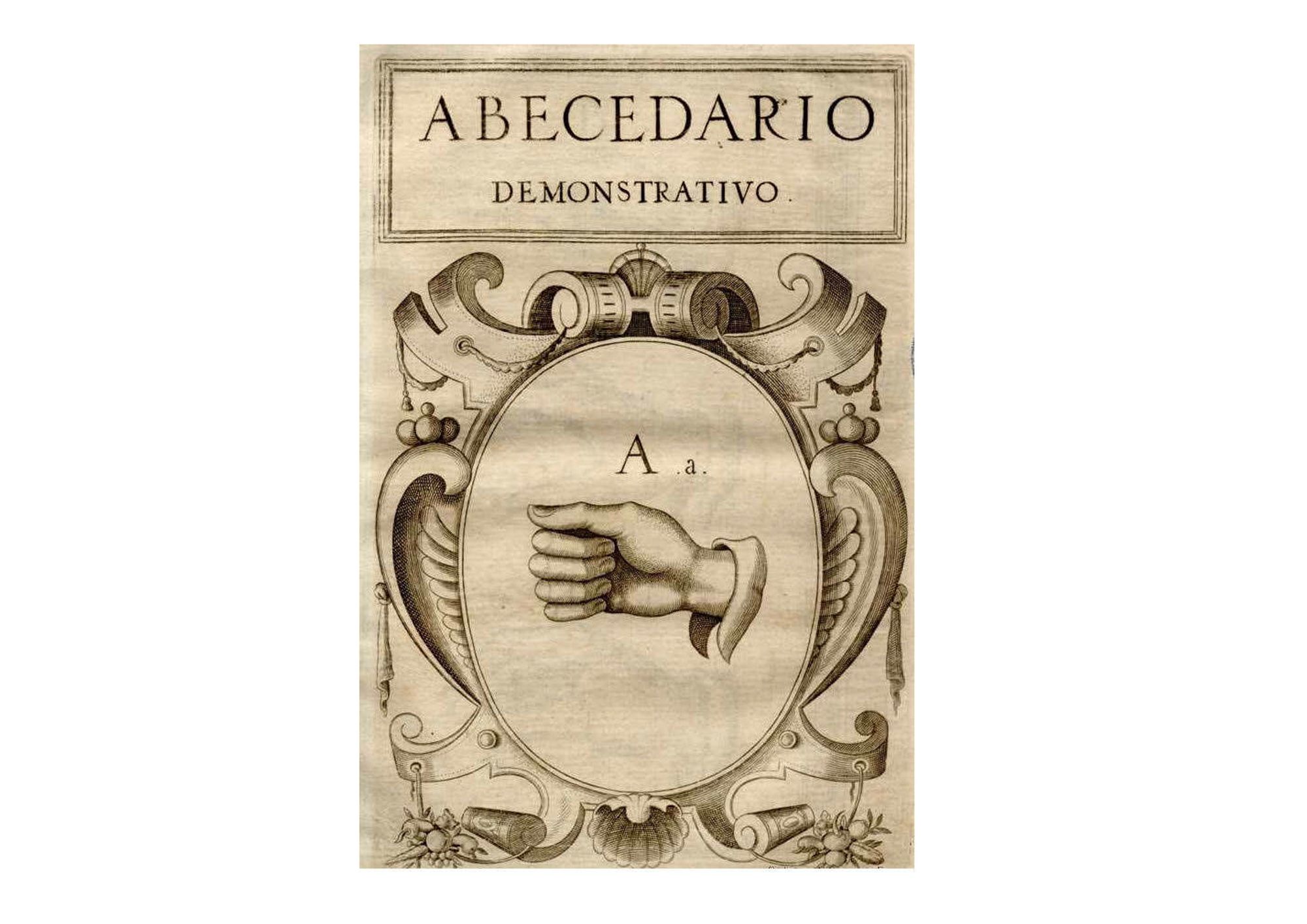
Fist as letter A in ASL. Lengua de Signos (Juan Pablo Bonet, 1620) "Demonstrative alphabet”. Reduction of letters and art for teaching mute people to speak”. This is accepted as the first modern treatise of phonetics, arranged a method of oral education for deaf people by using the manual signs, of manual alphabet to improve their communication. However, this manual alphabet was not good, but just a way to make communication possible. © National Library of Spain / PDM
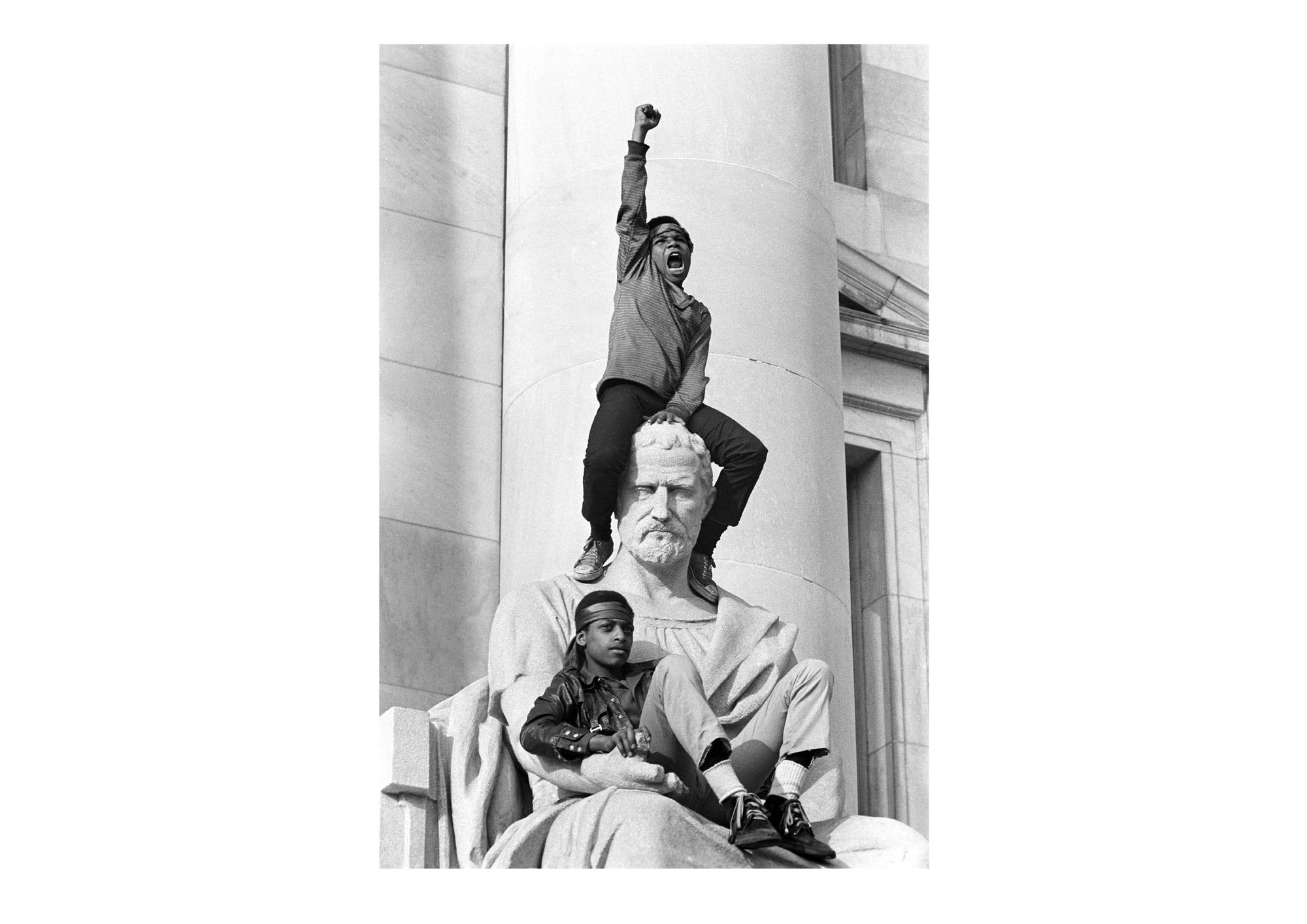
Emblematic fist. Black Panther students clenching their fist in protest at Yale University 1970. © Courtesy of the author Stephen Shames.
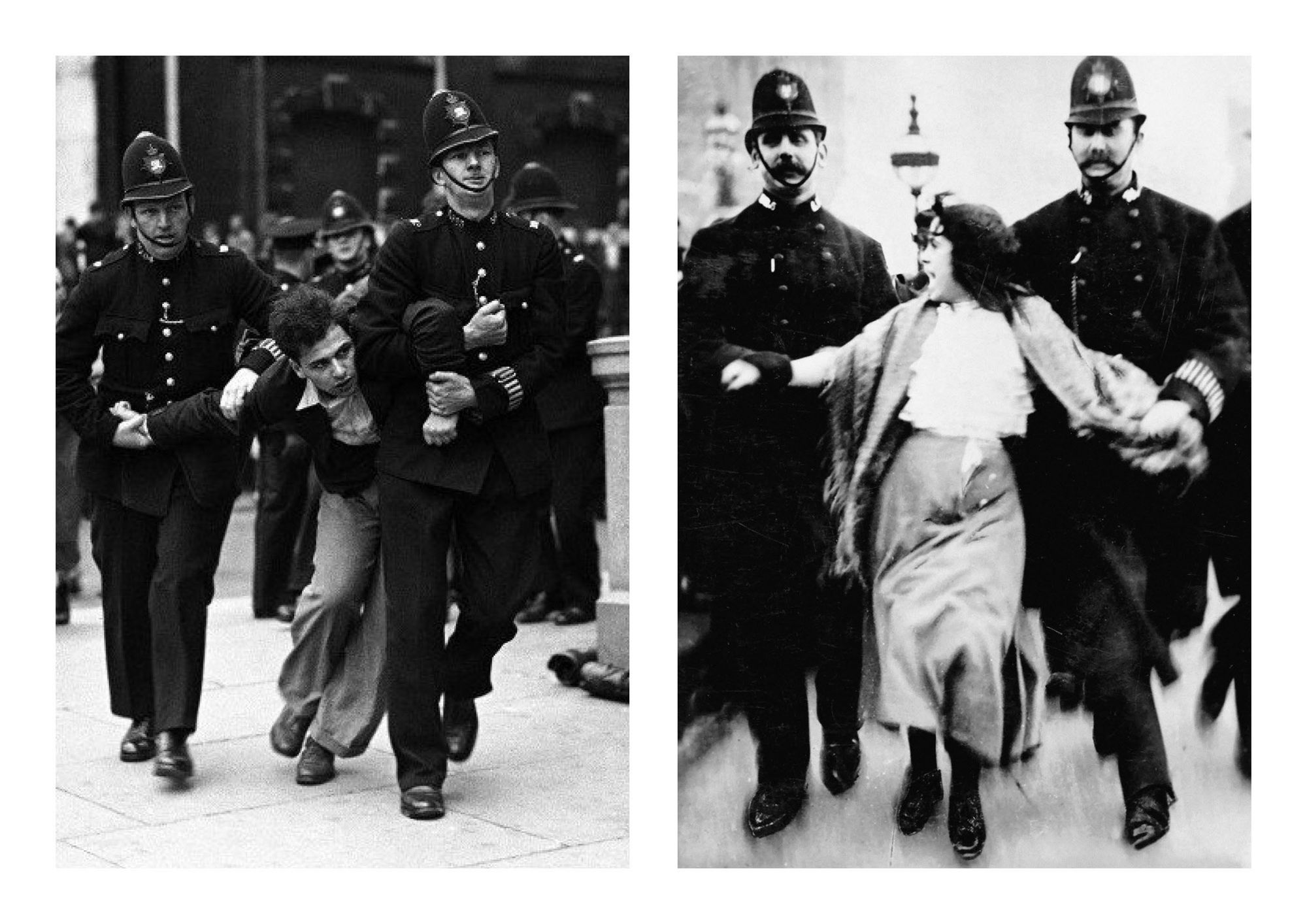
Fist as act to resist. A- Anti-fascist demonstrator arrested in Trafalgar square, as the fascists from Kentish Town, led by Sir Oswald Mosley, marched into Trafalgar Square for their meeting on July 4, 1937. PDM. B- Arrest of Dora Thewlis during her attempted, with other members of the WSPU (Women's Social and Political Union), to break into the Houses of Parliament, in March 1907. She was only 16 at the time, she was one of the most famous baby suffragettes fighting for the women’s right of vote. PDM
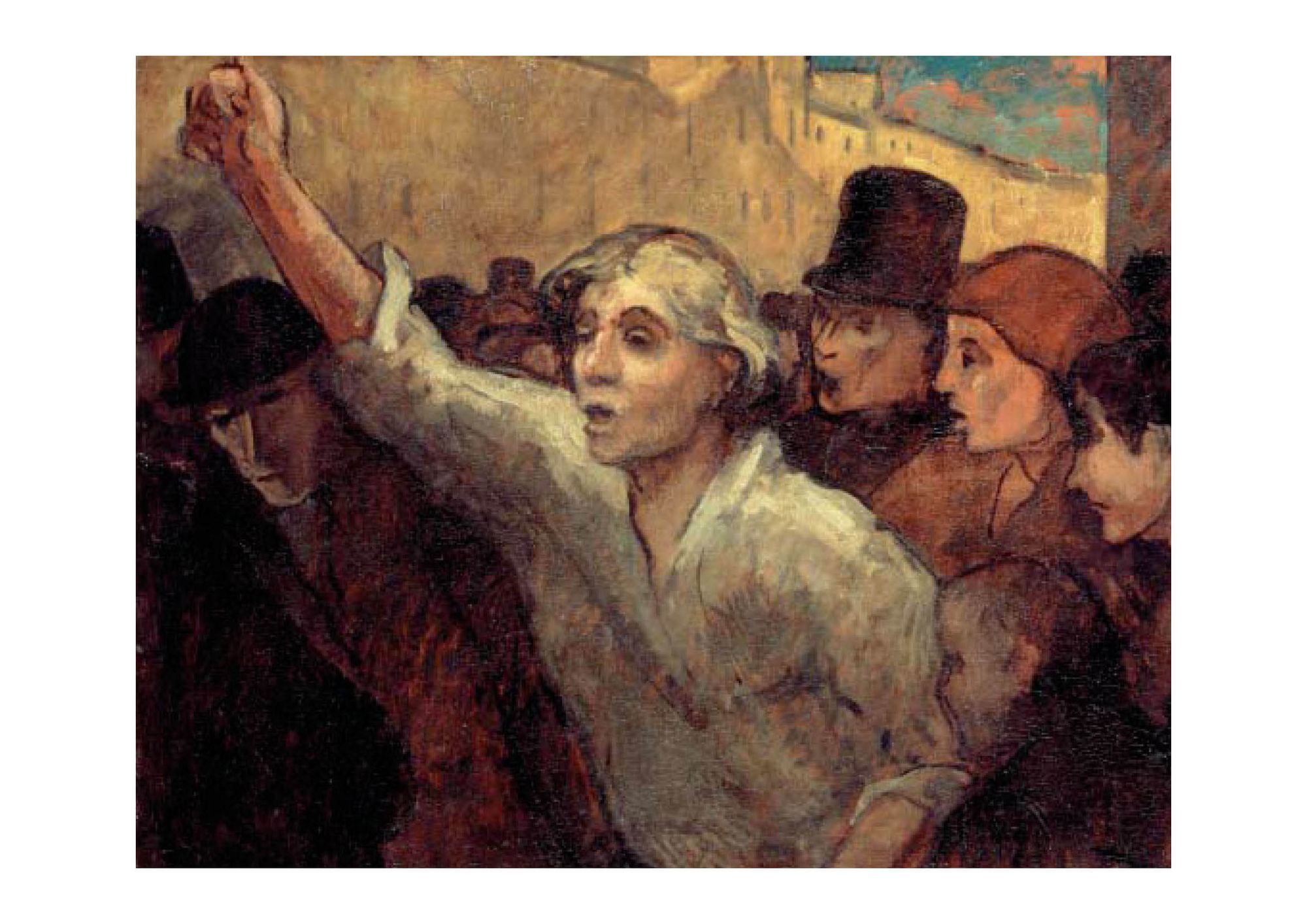
Fist of protest. The Uprising 1848 by Honoré Daumier. The first painting with a political clenched fist. © Courtesy of the The Phillips Collection, Washington, D.C.
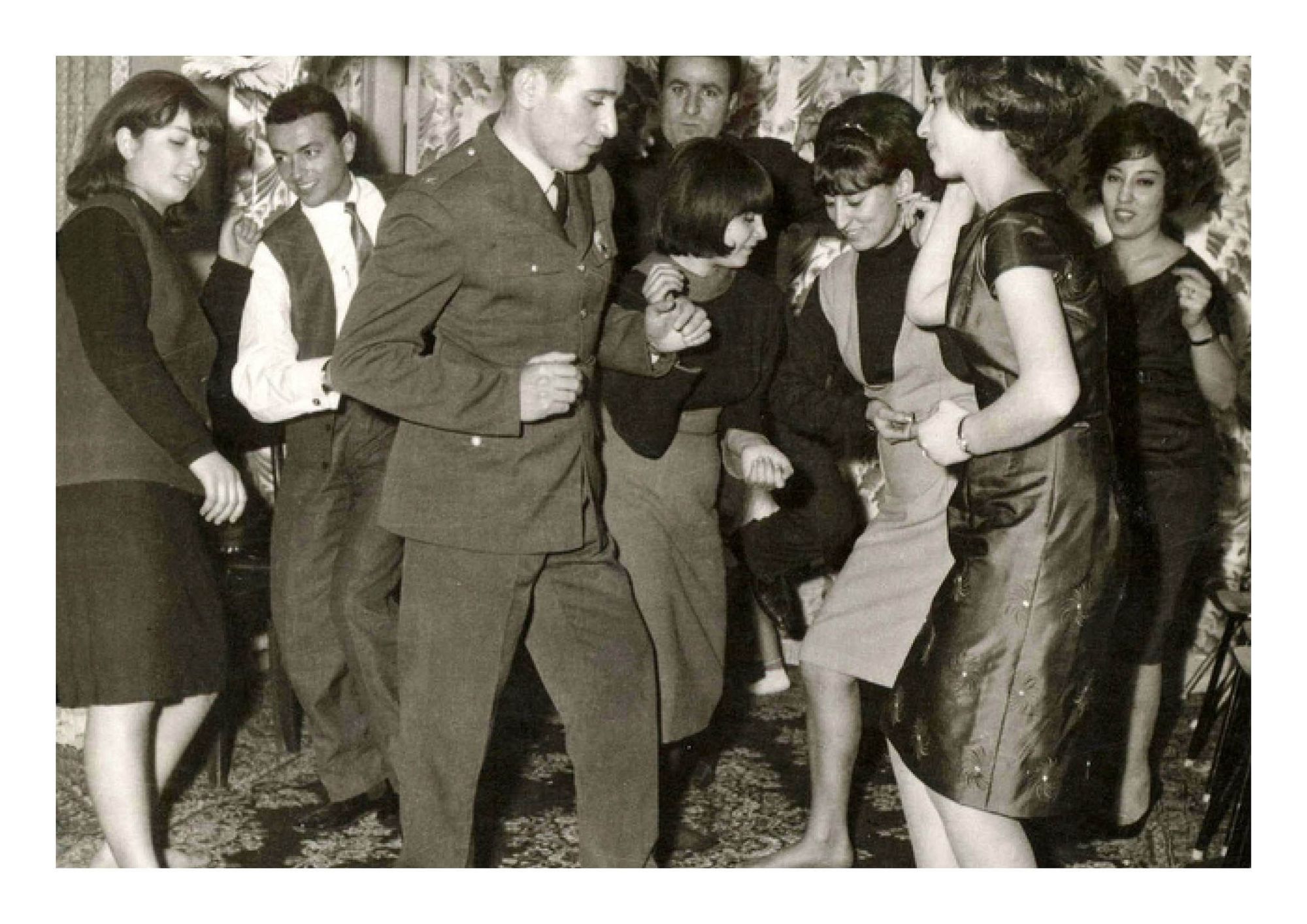
Fist as reflex, gesture of dance. The first logo with a fist, symbol of solidarity and support. Cartoon published in the Industrial Workers of the World (IWW) journal Solidarity on June 30, 1917. PDM
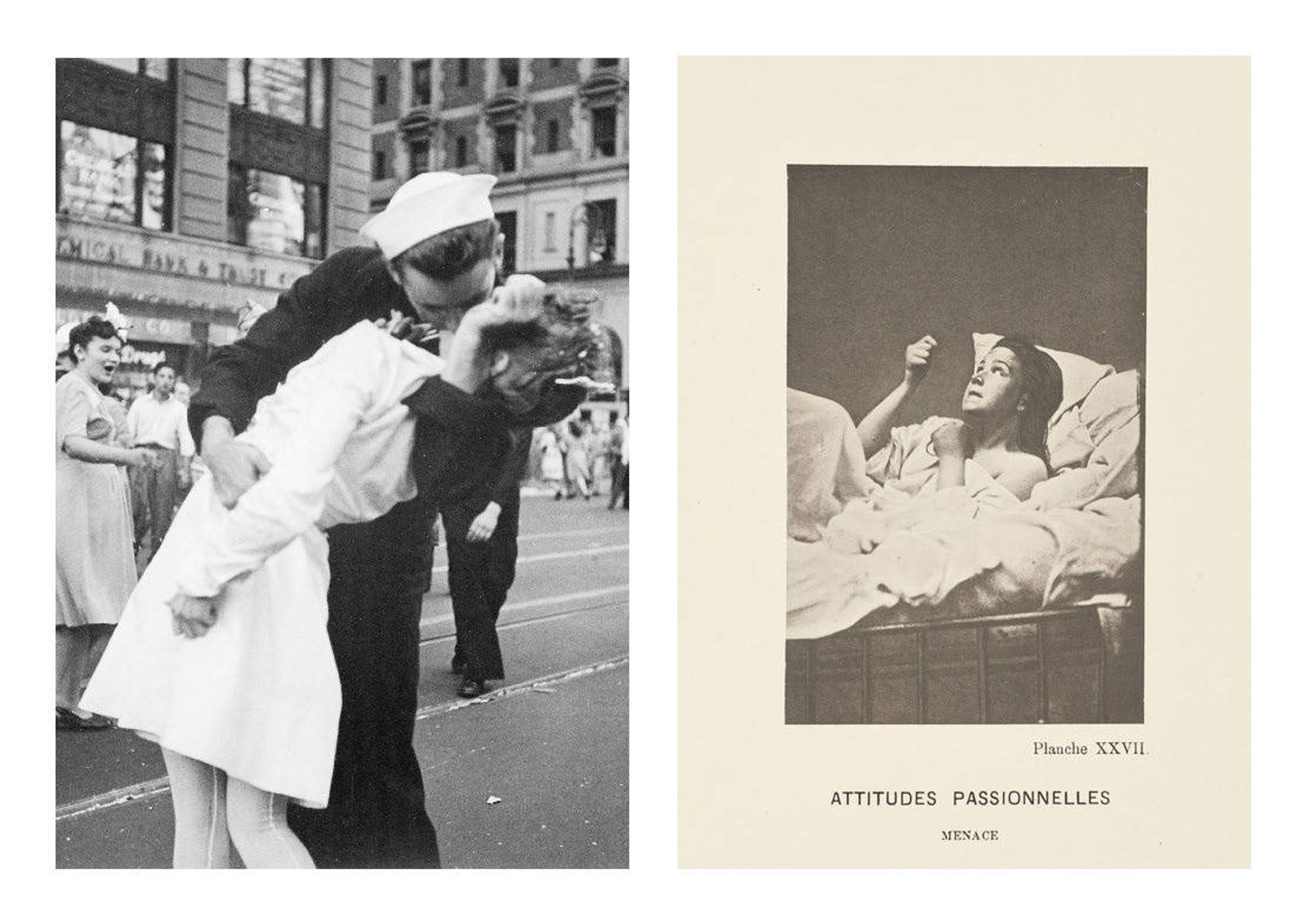
Fist of passion as reflex to hang. A- Kissing the War Goodbye, Times Square on August 14, 1945. © Lt. Victor Jorgensen - US archives / PDM. Another view from the iconic photo by Eisenstaedt. B- Fist as attitudes Passionnelles. View of a woman lying in bed, her head and shoulders propped up on pillows. Both hands are curled into fists and held at different heights in front of her face. Her head is tilted back as she looks up towards the ceiling. From Iconographie Photographique de la Salpetriere / Paul-Marie-Léon Regnard, 1878, Getty's Open Content Program.
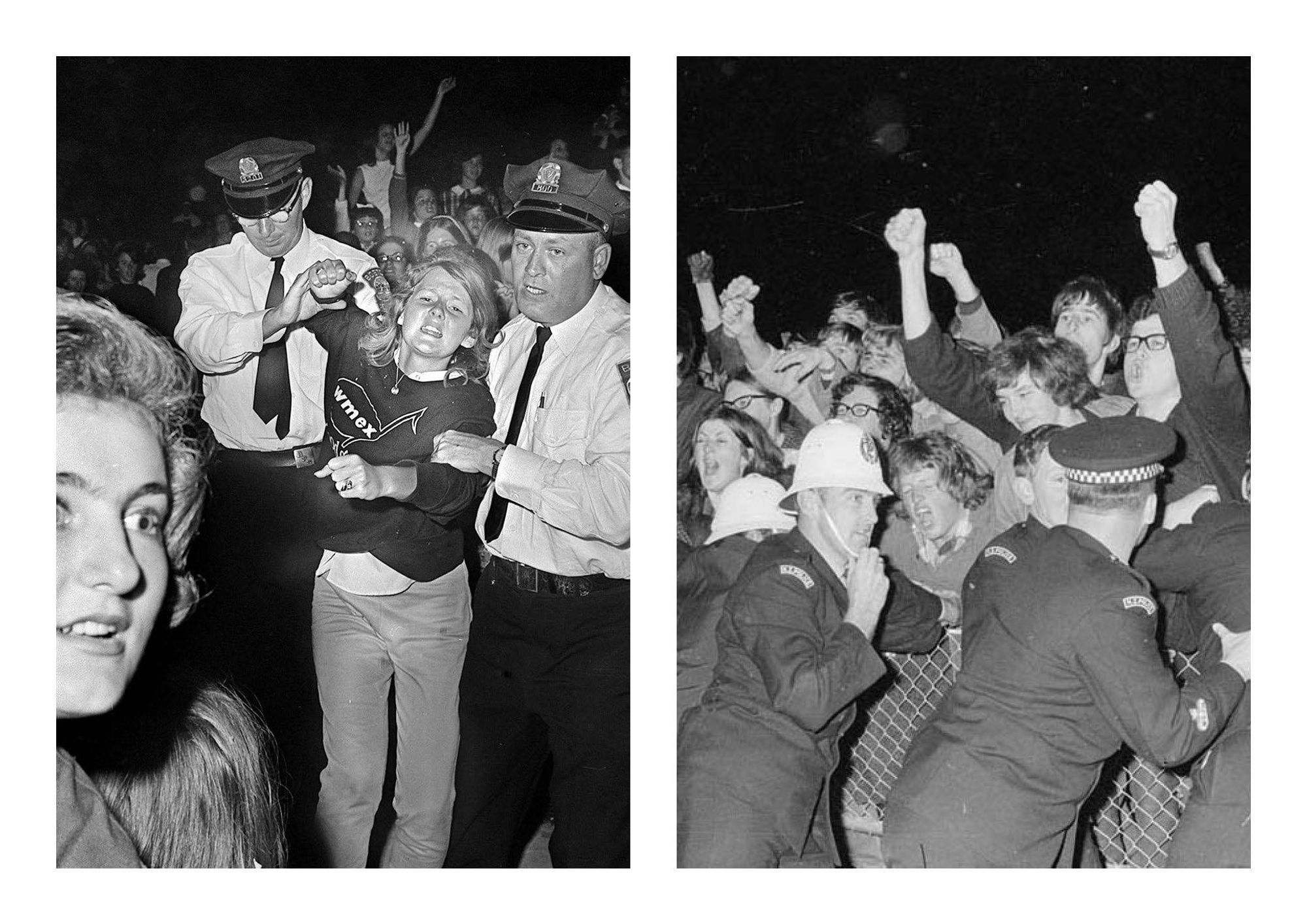
Engaged and disengaged fists. A- Anti-apartheid demonstrators clenching their fist in protest and are held back by police in the grounds of Parliament as the 1970. All Black team leaves after a parliamentary farewell. This was the first tour of South Africa for which Māori were selected. The catch was that they were classified as ‘honorary whites’ for the duration. B- Non political fist by hysterical fans apprehended by police during a Beatles concert in 1964.
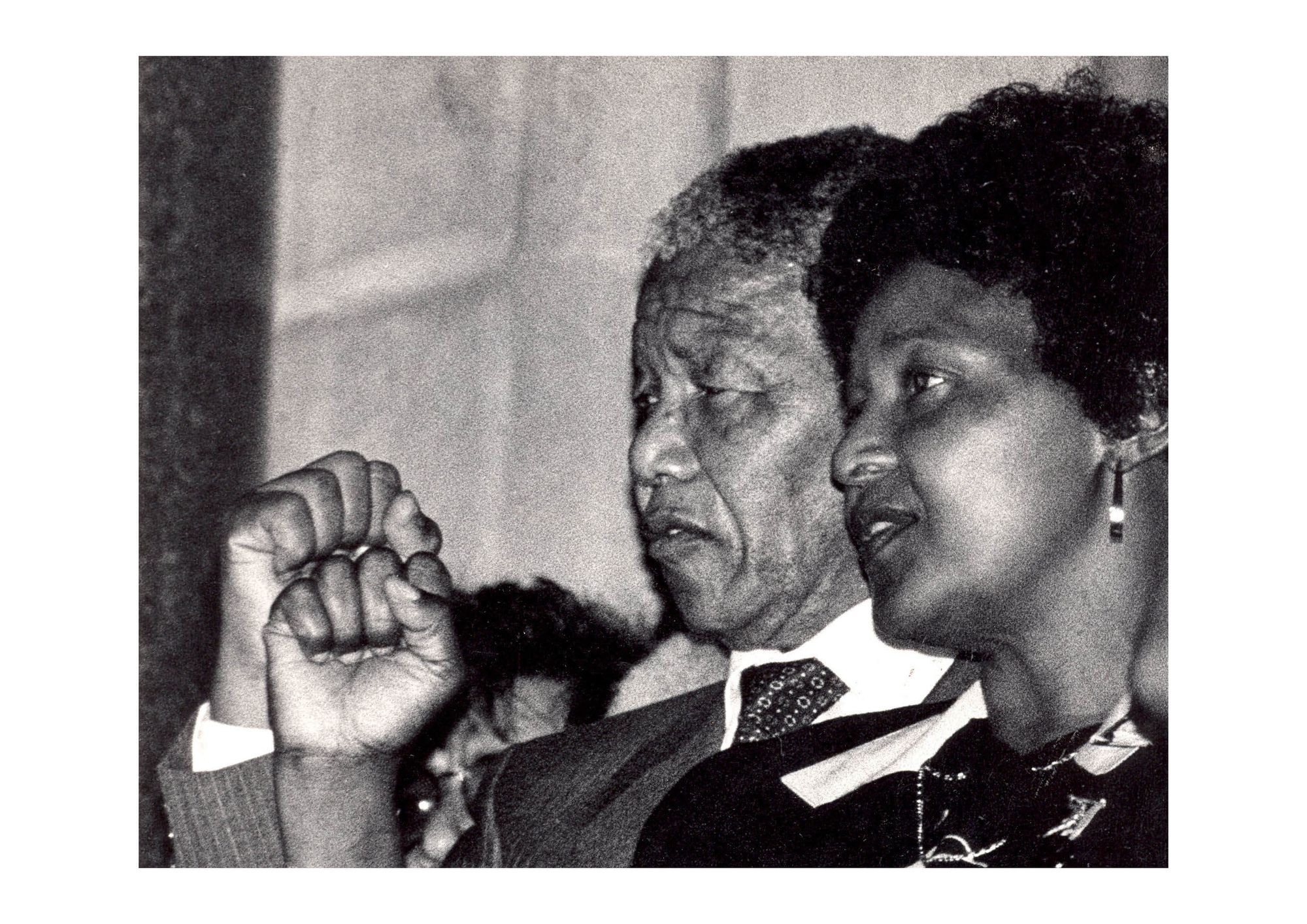
Fist of solidarity. Winnie Mandela and her husband Nelson Mandela with raised their fists at the Grand Parade after the release of Mandiba from the Victor Verster prison in 1990. © Independent Archives / Brenton Geach.
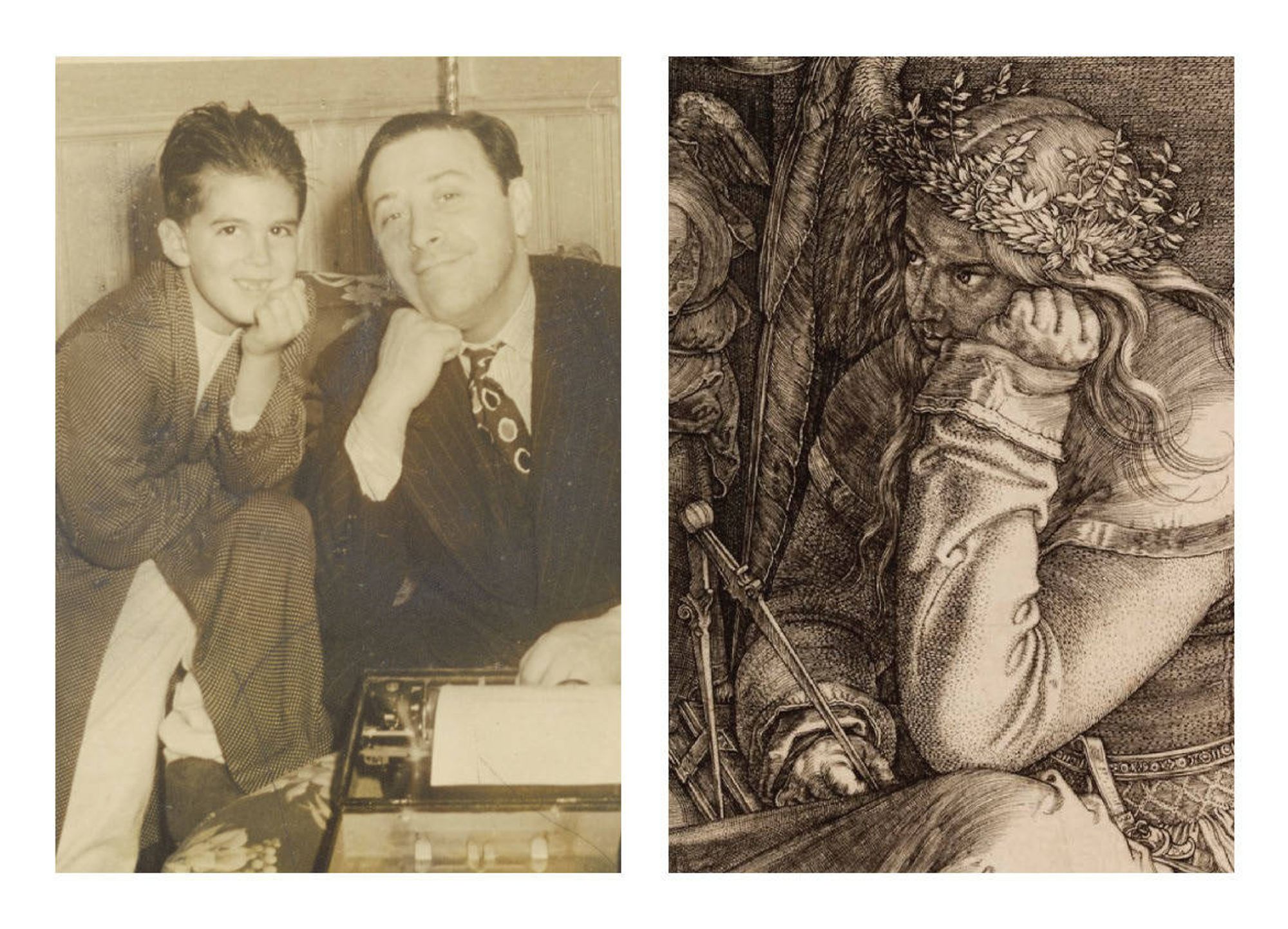
Fist under the chin. A- A man and young boy resting their chin on their fist and smiling, From an unknown family album 1920/30. Getty Open Program. B- Melencolia, engraving by Albrecht Dürer, 1514. Position to holds her head held in her hand.
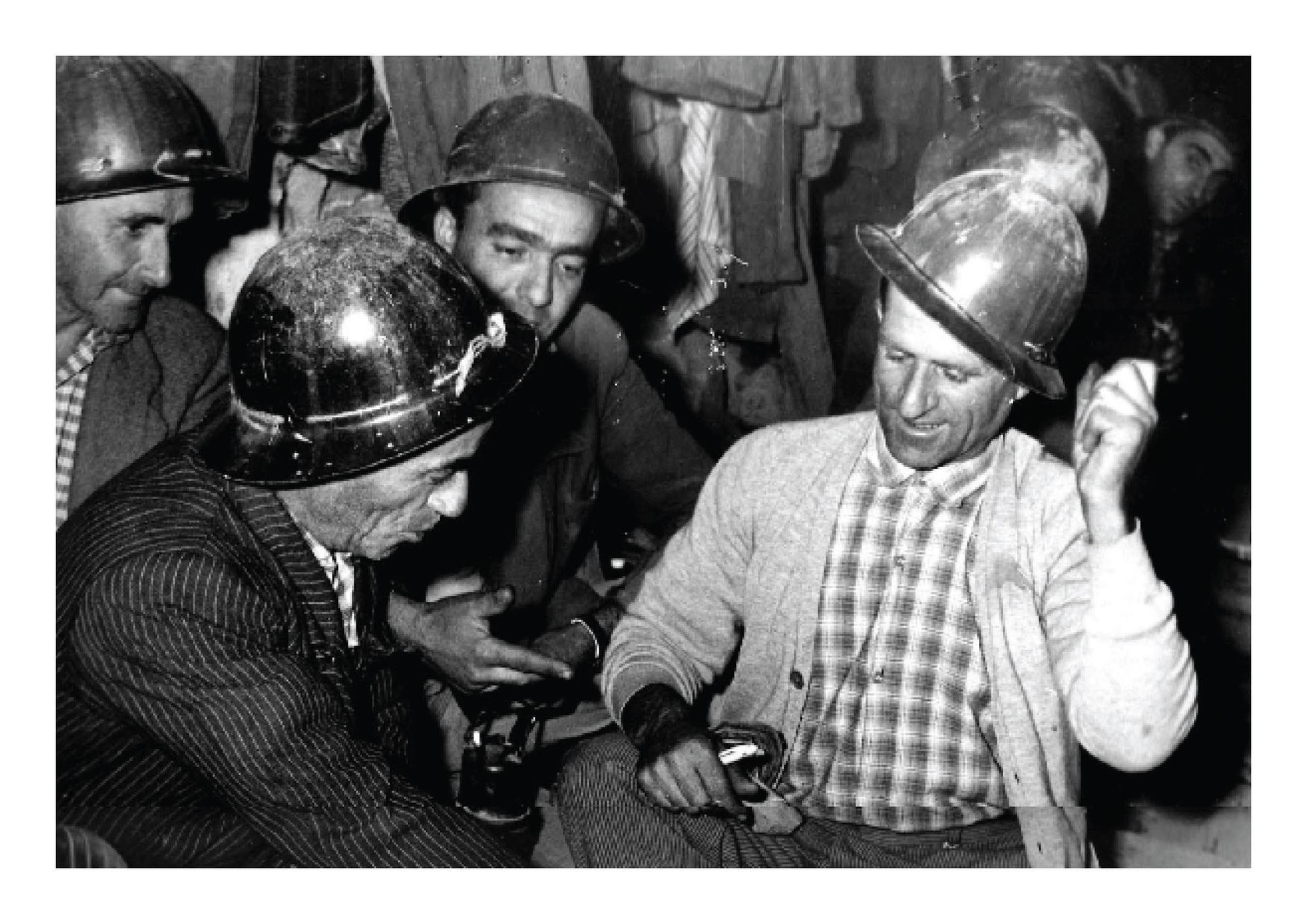
Fist as social game. Workers playing rock paper scissor, one of the most ancient international game. PDM
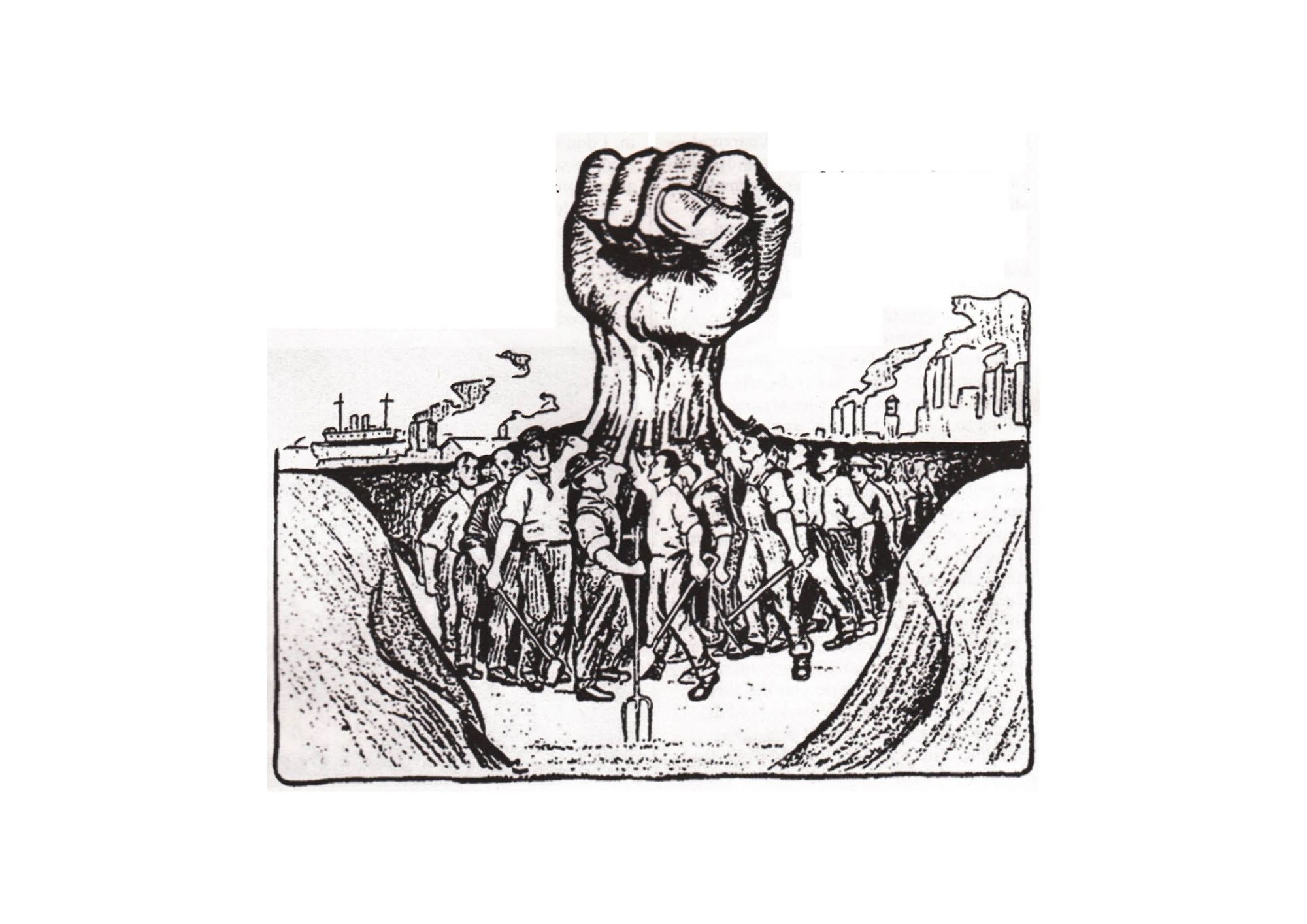
The first logo with a fist, symbol of solidarity and support. Cartoon published in the Industrial Workers of the World (IWW) journal Solidarity on June 30, 1917. PDM
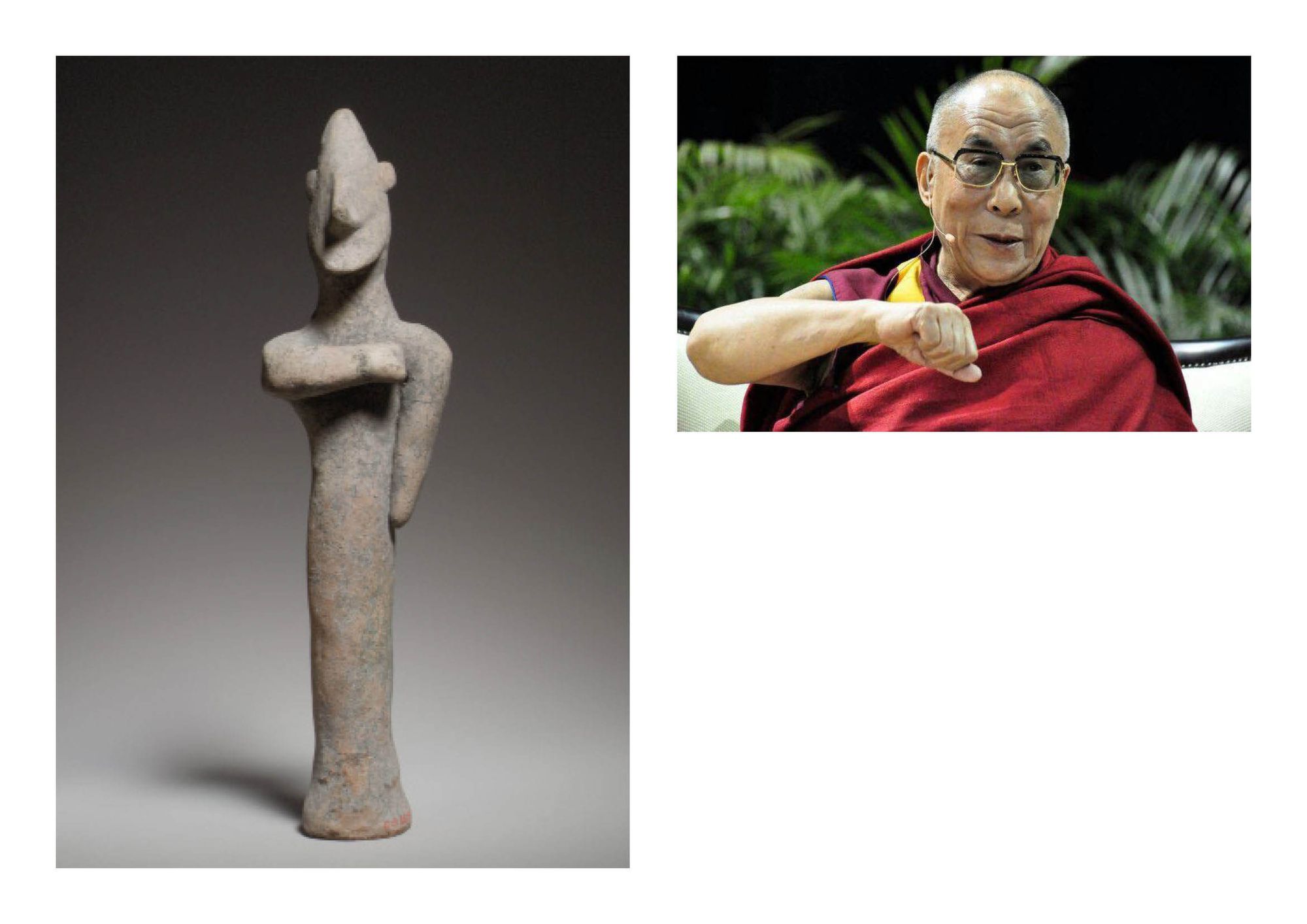
Fist as salute. A- Standing in salute position male Cypro-Archaic figurine ca. 750–480 B.C. B- Tibet's exiled spiritual leader, the Dalai Lama, during a three-week visit to North America in 2009, learn a contemporary gesture - the fist-bump.

Fist bump salute. President Barack Obama fist-bumps custodian Lawrence Lipscomb Dec. 3, 2009. Courtesy of Pete Souza. The friendly 'fist-bump' greeting was infamously nicknamed a "terrorist fist-jab" by a Fox News presenter during the 2008 presidential campaign. The gesture is a similar in meaning to a handshake or high five. A fist bump can also be a symbol of giving respect or approval. The "fist bump" can be traced back to the late 1800s when boxers would be instructed to touch gloves at the start of a contest and out of the ring. The dap probably was originated during the Vietnam war as a modified form of the Black Power salute, which was prohibited by the US military.

Fist with handcuff. A- Fists with Handcuffs by Harry Houdini, the most famous American magician and escape artist, also called the King of Handcuffs. Circa 1905. PDM . B- Lee Harvey Oswald giving a clenched-fist salute with handcuff during his arrest for the assassination of United States President John F. Kennedy on November 22, 1963. He always admitted to be innocent and Marxist. PDM
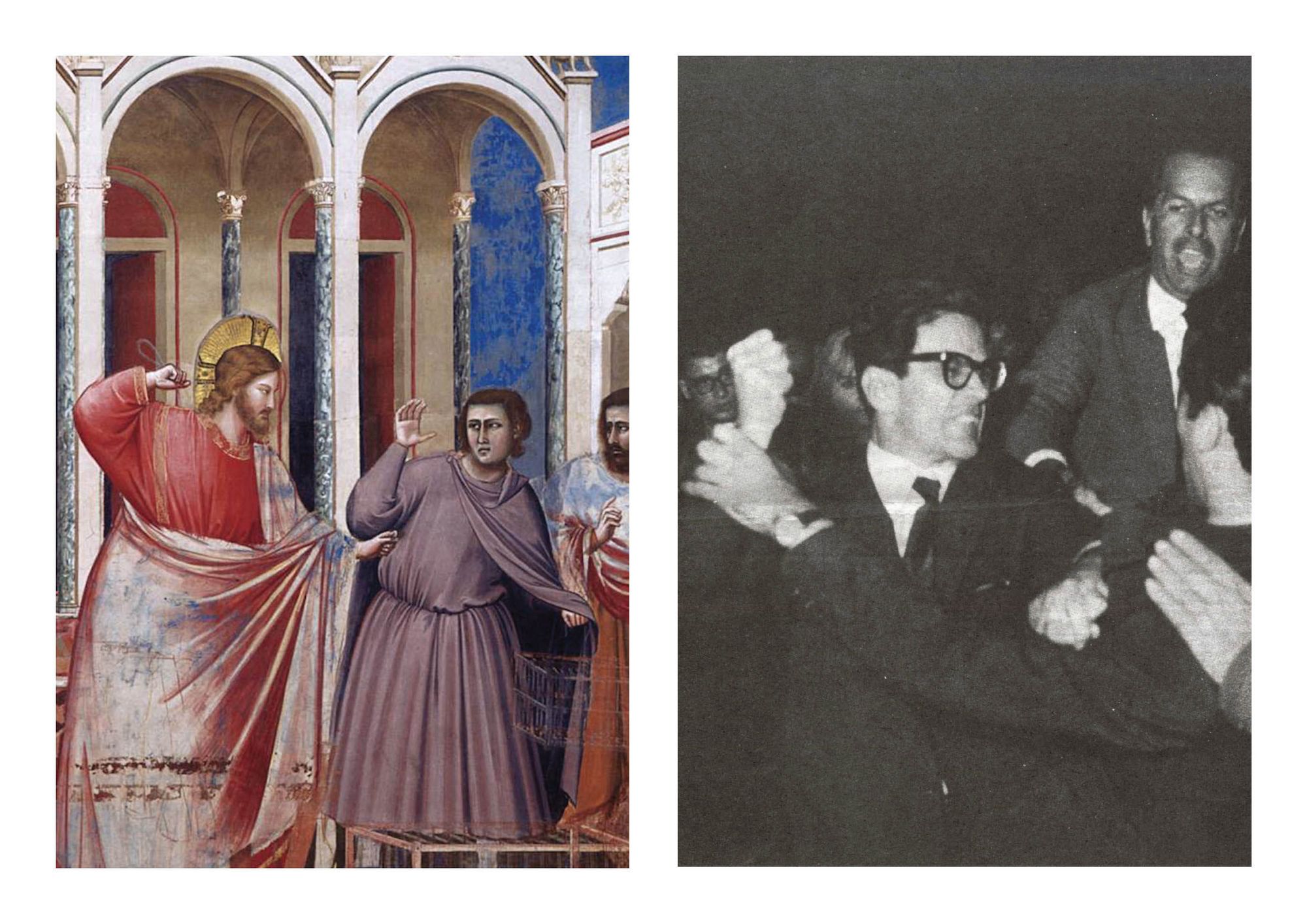
The Fist of aggression. A- Giotto di Bondone – Jesus threatening with a fist the Money-changers from the Temple. No. 27 Scenes from the Life of Christ. Cappella degli Scrovegni, Padova, 1306. B- Pasolini was attacked on the evening of 22 September 1962, at the Roman premiere of Mamma Roma. A young student of the extreme right shouted "Pasolini, in the name of national youth, I tell you that you are disgusting."
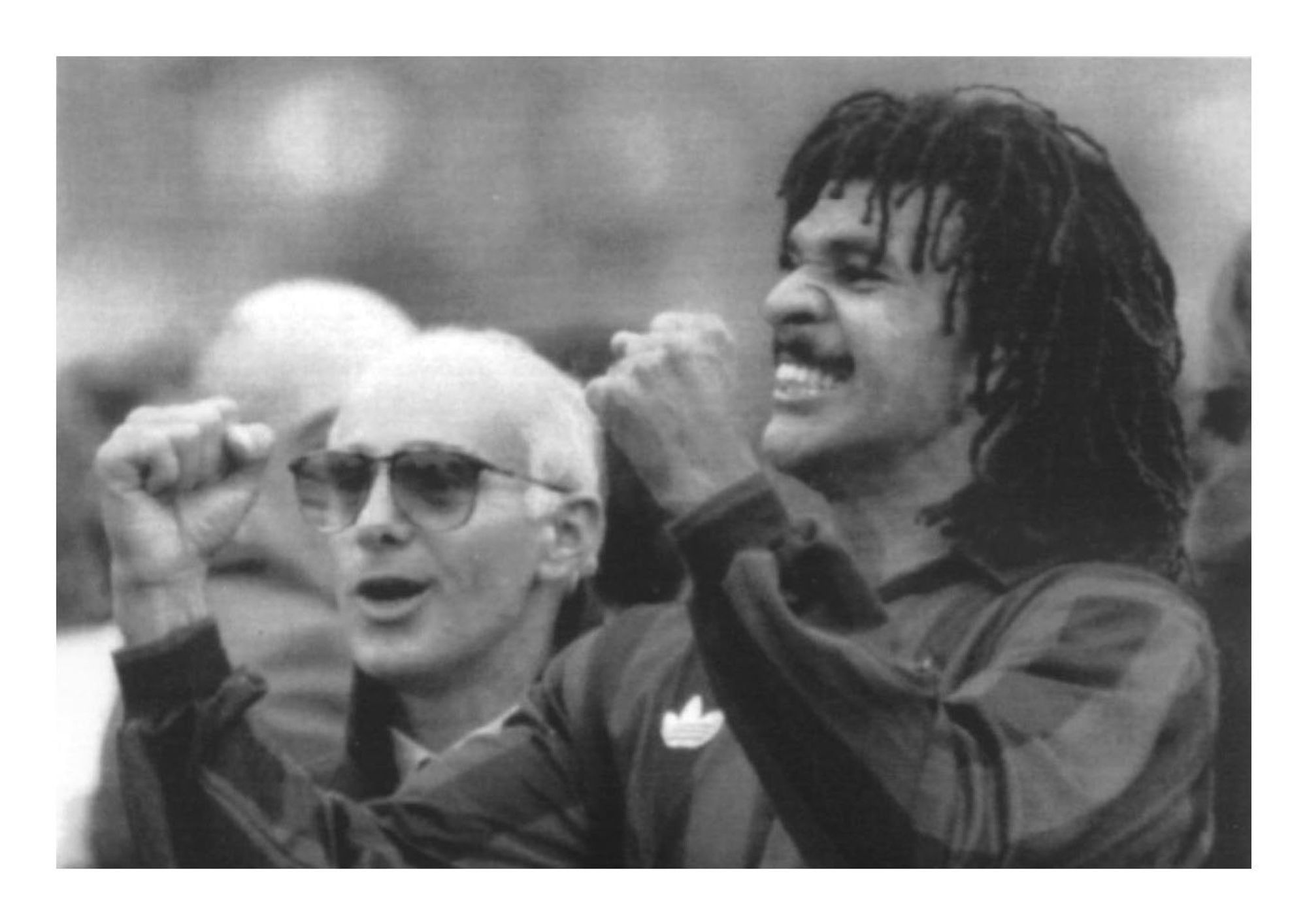
Double fist of joy. Milan’s Dutchman Ruud Gullit clenches his fists in joy with coach Arrigo Sacchi for their Italian team’s victory over Paraguay’s Olimpia in the world club soccer in december 9 1990. In 2004, he was named one of the Top 125 greatest living footballers as part of FIFA’s 100th anniversary celebration. When Gullit was named winner of the Ballon d'Or in 1987, he dedicated the award to the then imprisoned Nelson Mandela.
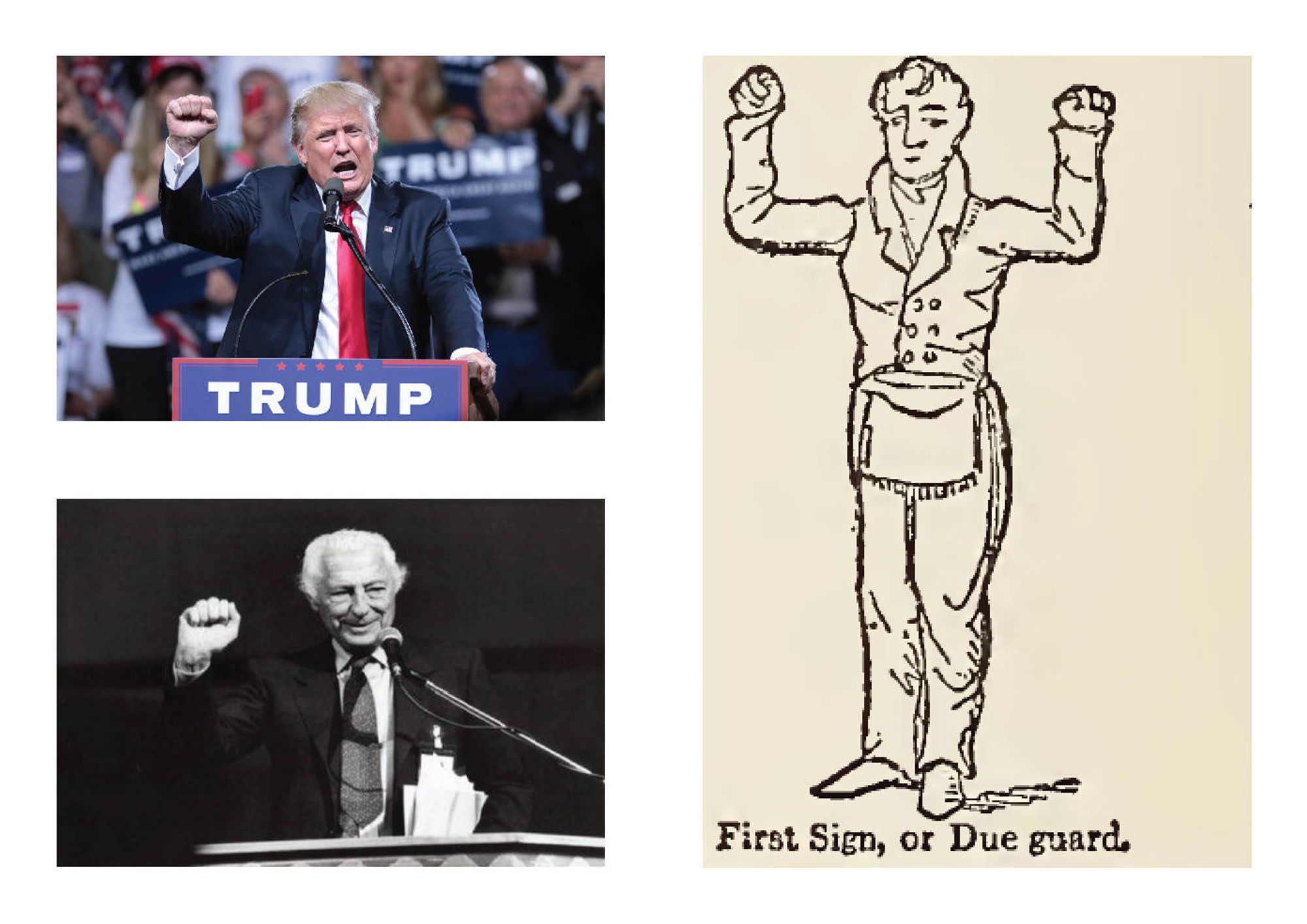
Masonic fist. A- Gianni Agnelli, FIAT automobiles holder, during the talk for Confindustria, General confederation of Italian Industry, 1993. He is doing the Masonic greeting with a closed fist, symbol of the unity of the capitalism class, and arm to form the team, the working tool for the Mason. © The Internet Archive. B - President Donald Trump speaking with supporters at a campaign rally at Veterans Memorial Coliseum at the Arizona State Fairgrounds in Phoenix, Arizona. He uses the fist as an aggressive symbol of dominance, wielding it throughout his rallies after speeches. © Courtesy of Gage Skidmore C- Image from the Richardson's monitor of free-masonry: being a practical guide to the ceremonies in all the degrees conferred in masonic lodges, chapters, encampments, &c. explaining the signs, tokens and grips, and giving all the words, pass-words, sacred words, oaths, and hieroglyphics used by masons, 1860. PDM
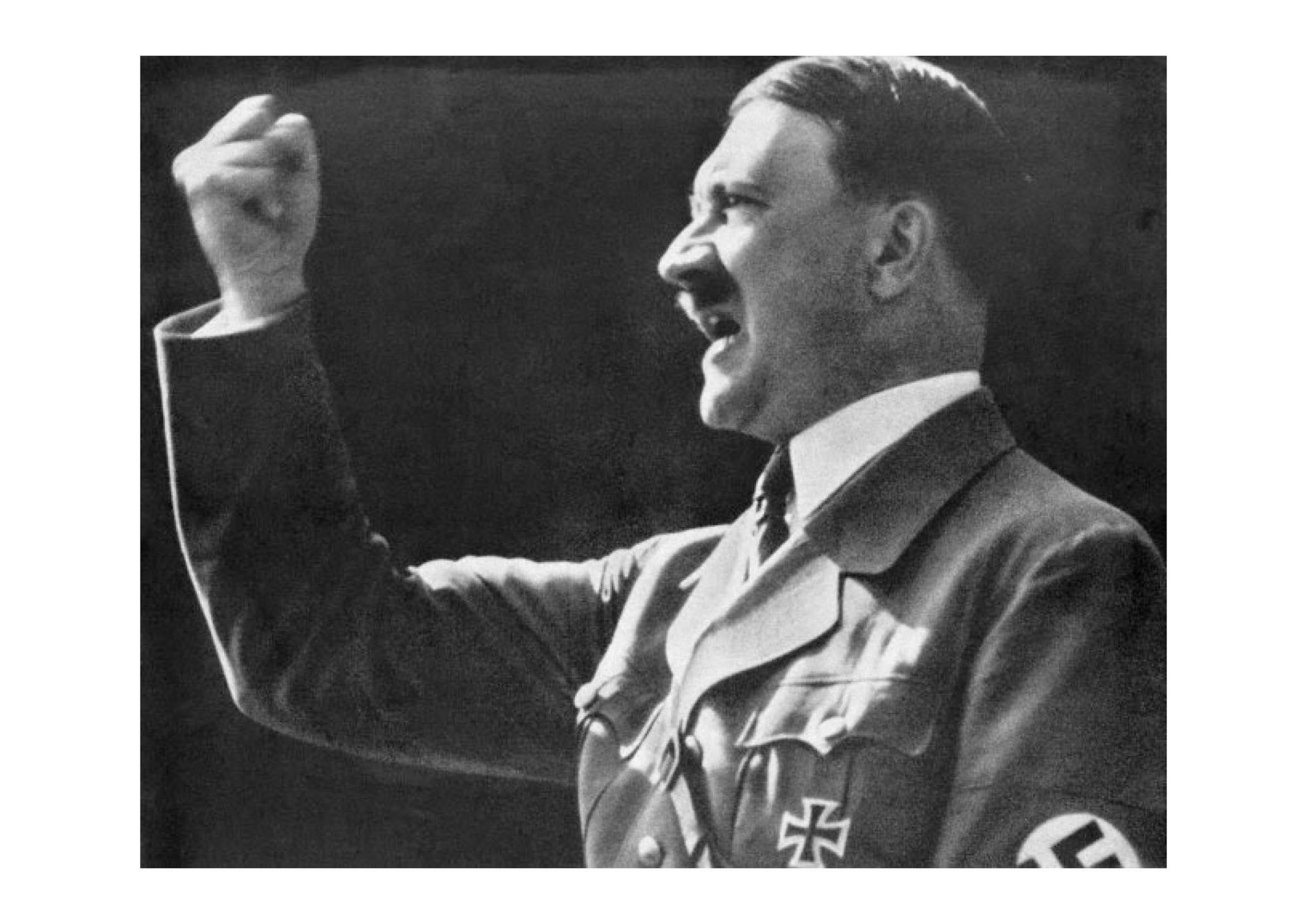
Nazi fist. German dictator Adolf Hitler shaking his fist whilst addressing a crowd at a rally during the Second World War, 26th July 1941. CC-BY-SA 3.0
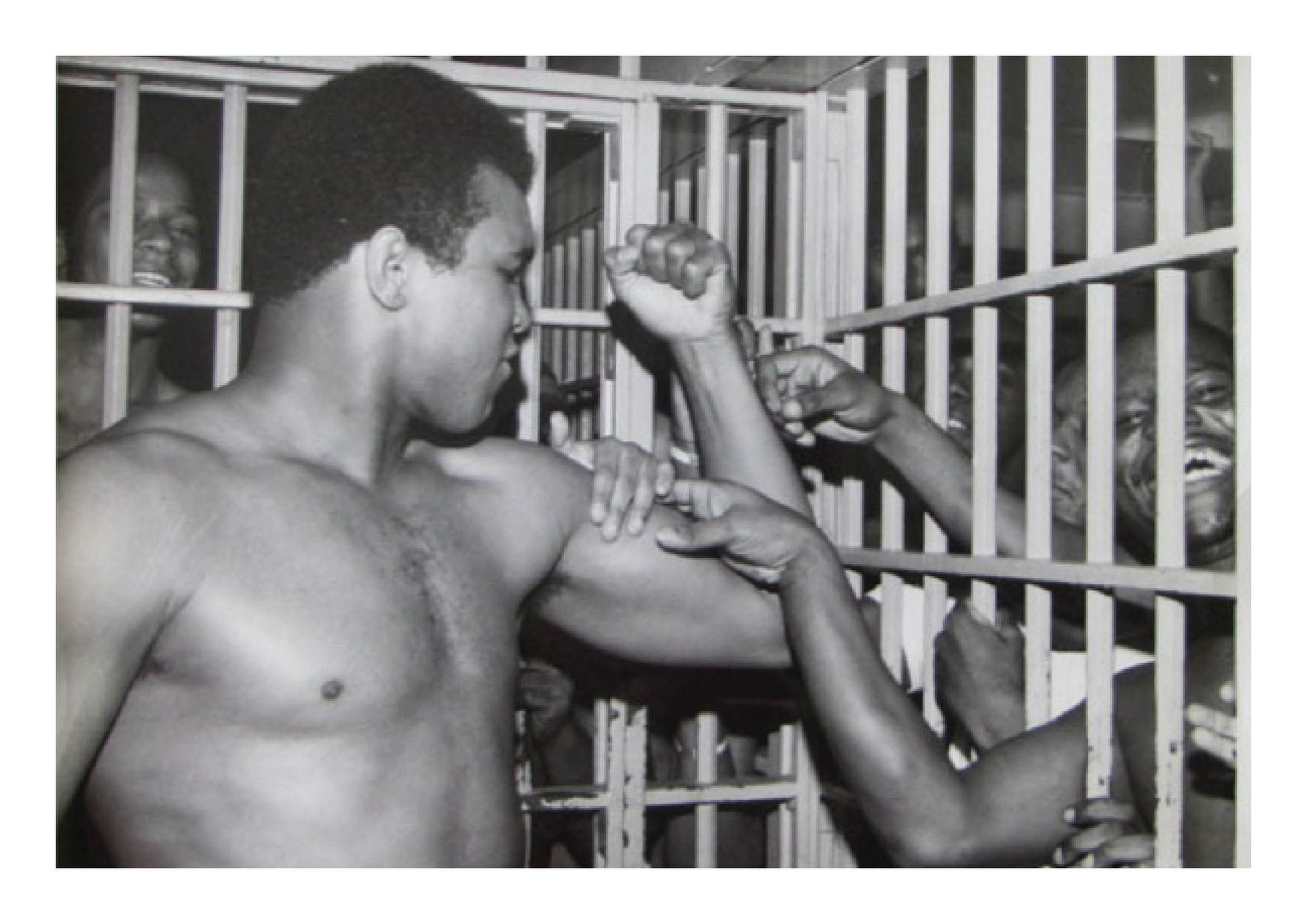
Fist of resistance. Muhammad Ali showing his fist in jail. He refused to serve in Vietnam after being drafted into military service in 1967. "Why should they ask me to put on a uniform and go 10,000 miles from home and drop bombs and bullets on brown people in Vietnam while so-called Negro people in Louisville are treated like dogs and denied simple human rights? No, I'm not going 10,000 miles from home to help murder and burn another poor nation simply to continue the domination of white slave masters of the darker people the world over. I will not disgrace my religion, my people or myself by becoming a tool to enslave those who are fighting for their own justice, freedom and equality. I have nothing to lose by standing up for my beliefs. So I'll go to jail, so what? We've been in jail for 400 years." CC-BY-SA 3.0
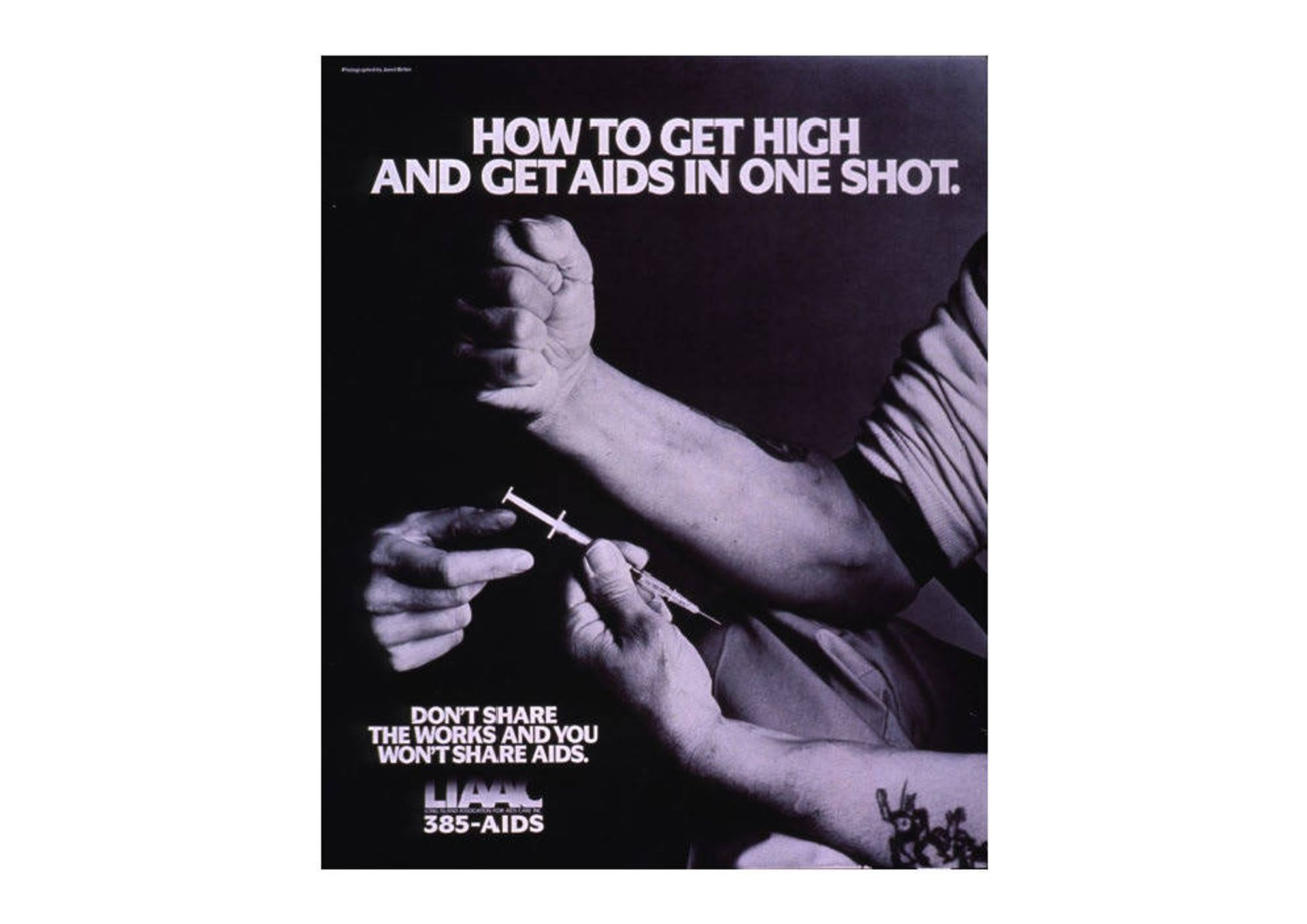
Medical fist. Medical Social Campaign. Arms of a man with one hand tightly clenched in a fist and one hand holding a syringe. Another hand reaches into the photo to grasp the syringe. PDM / © History of Medicine (NLM)
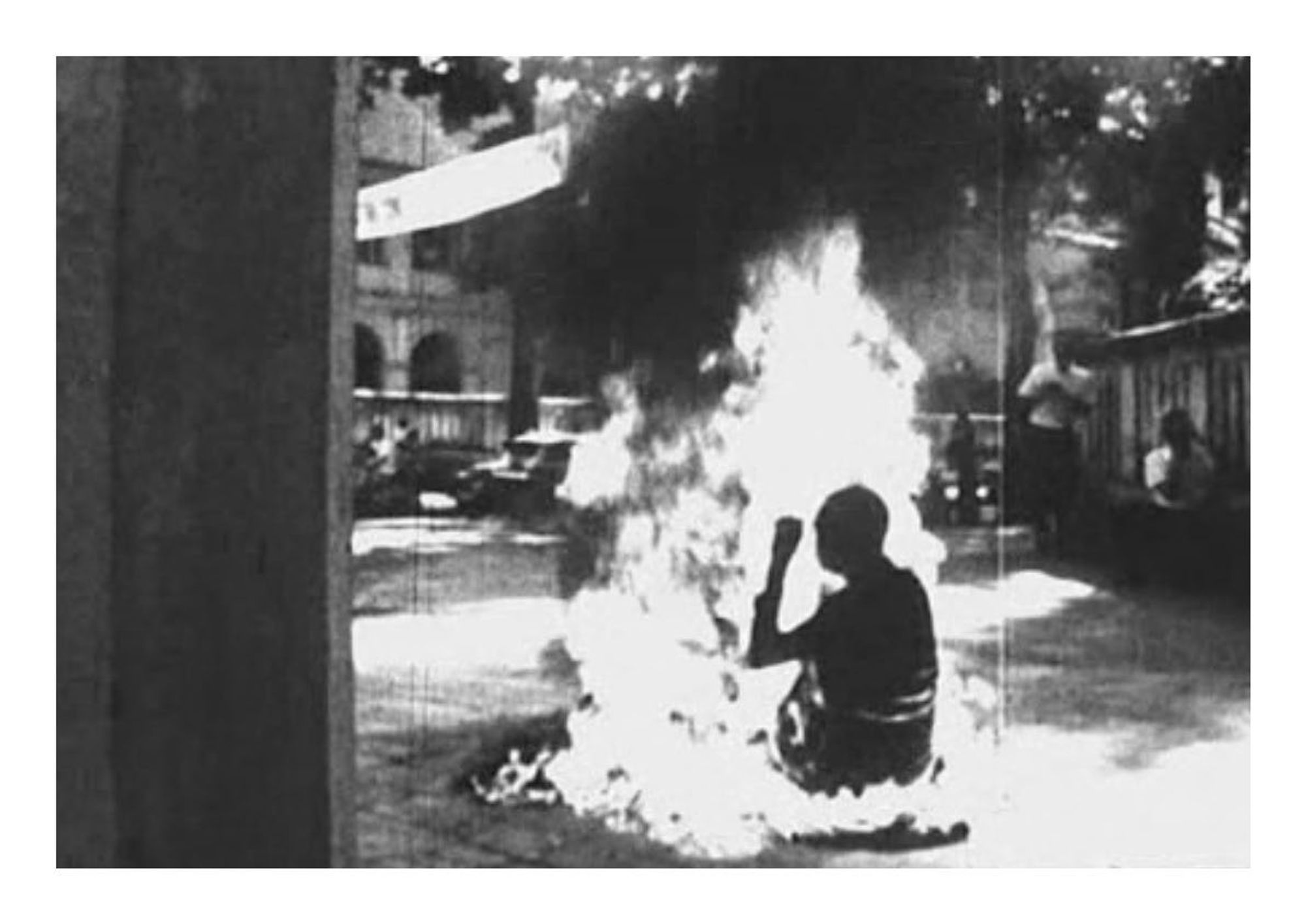
Fist of religious resistance. Thich Quang Duc, young Buddhist monk burned himself to death in Saigon's Market Square, to protest the government's religious policies, 1963. He then poured gasoline all over his body and set himself alight. He maintained his calm meditative position and did not even make a sound while his body burned and then within a few minutes toppled over. His body was consumed but his heart remained intact. It was placed in the Reserve Bank of Vietnam and is called the Symbol Of The Holy Heart. Still from a anonymous video.
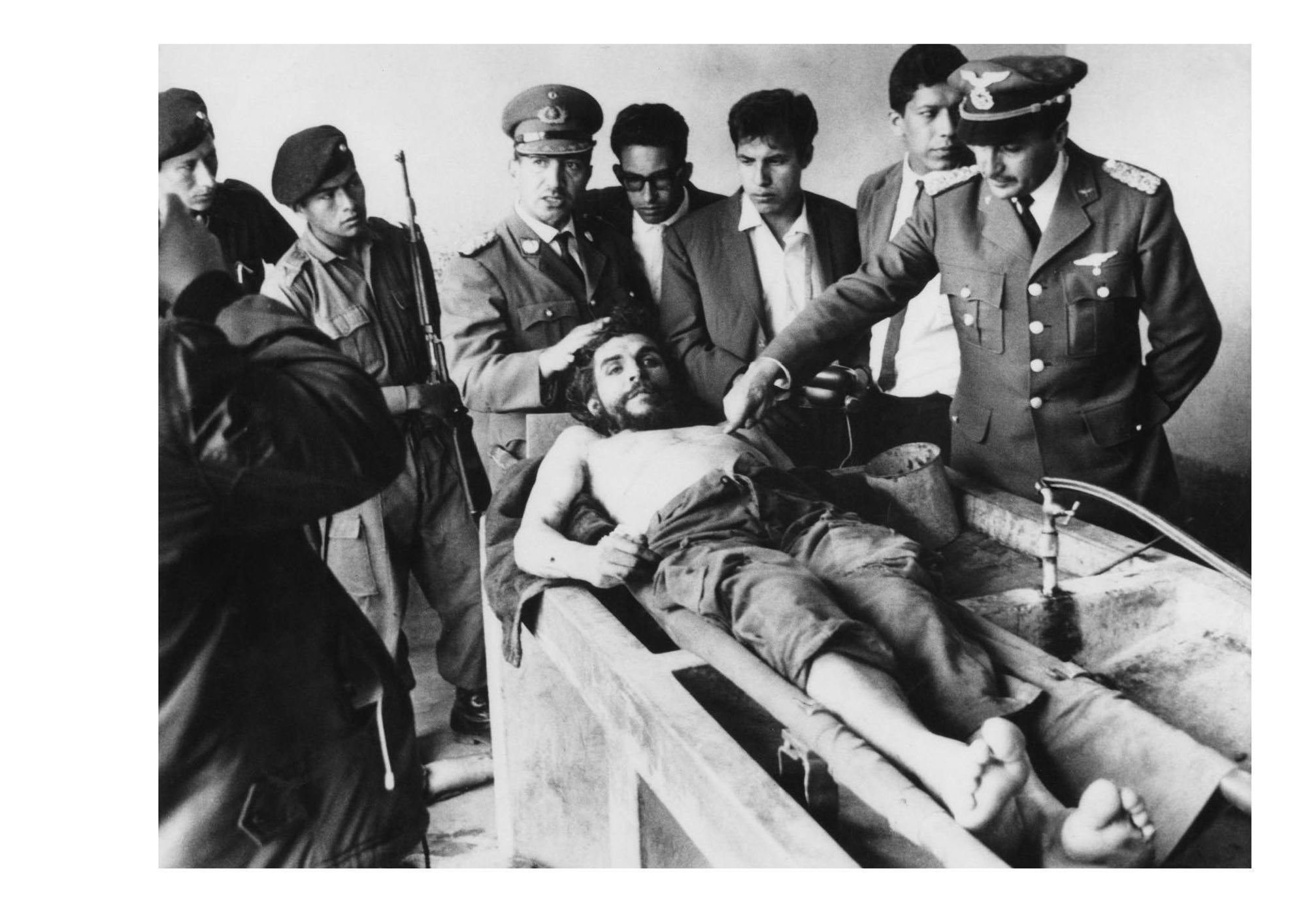
Fist for rigor mortis. This is the only image showing Che Guevara with a fist. Bolivian army officers display the body of Che Guevara on October 9, 1967. Photo by Freddie Alborta. After that picture the CIA ordered to cut off his hands and to preserve them in formaldehyde to prove his identity.

Funerals clenched fists salute. A- Clenched fists salute during the funerals of Giannino Zibecchi and Varalli, Milan April 16th 1975, © Courtesy of the author, Francesco Radino. Zibecchi and Varalli were killed by fascists. The seventeen years old student Varalli was shot dead during a demonstration in Milan for the right to housing. Another protester, Giannino Zibecchi, was run over by a police truck during. B- The funeral of Giuseppe Pinelli, Italian anarchist killed by the police, in Milan's major Musocco cemetery on 20 December 1969. © Archivio Colombo

Raised Fist. Communist and anarchic salute with the fist beside the head, Spanish Civil War 1930s. PDM
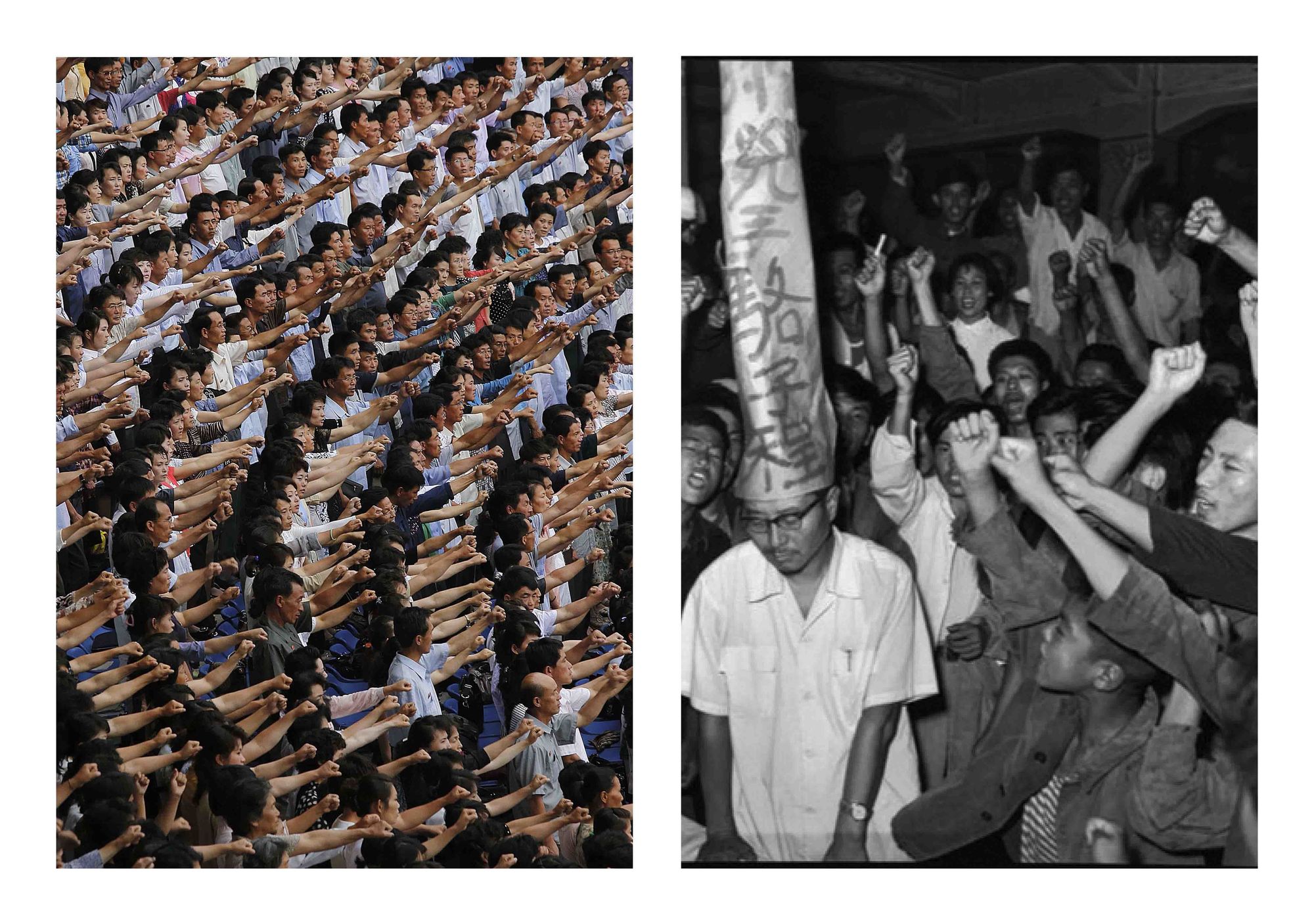
Fist as symbol of denigration and of opposition. A- The staff of the Heilongjiang Daily accuses Luo Zicheng, head of the work group designated by the provincial Party committee, of following the capitalist line and opposing mass movement. His dunce cap announces his crimes. Harbin, Aug. 25, 1966.Photo by Li Zhensheng. B- Men and women pump their fists in the air and chant "Defend!" as they carry propaganda slogans calling for reunification of their country during the "Pyongyang Mass Rally on the Day of the Struggle Against the U.S." The month of June in North Korea is known as the "Struggle Against U.S. Imperialism Month" and it's a time for North Koreans to swarm to war museums, mobilize for gatherings denouncing the evils of the United States and join in a general, nationwide whipping up of the anti-American sentiment.
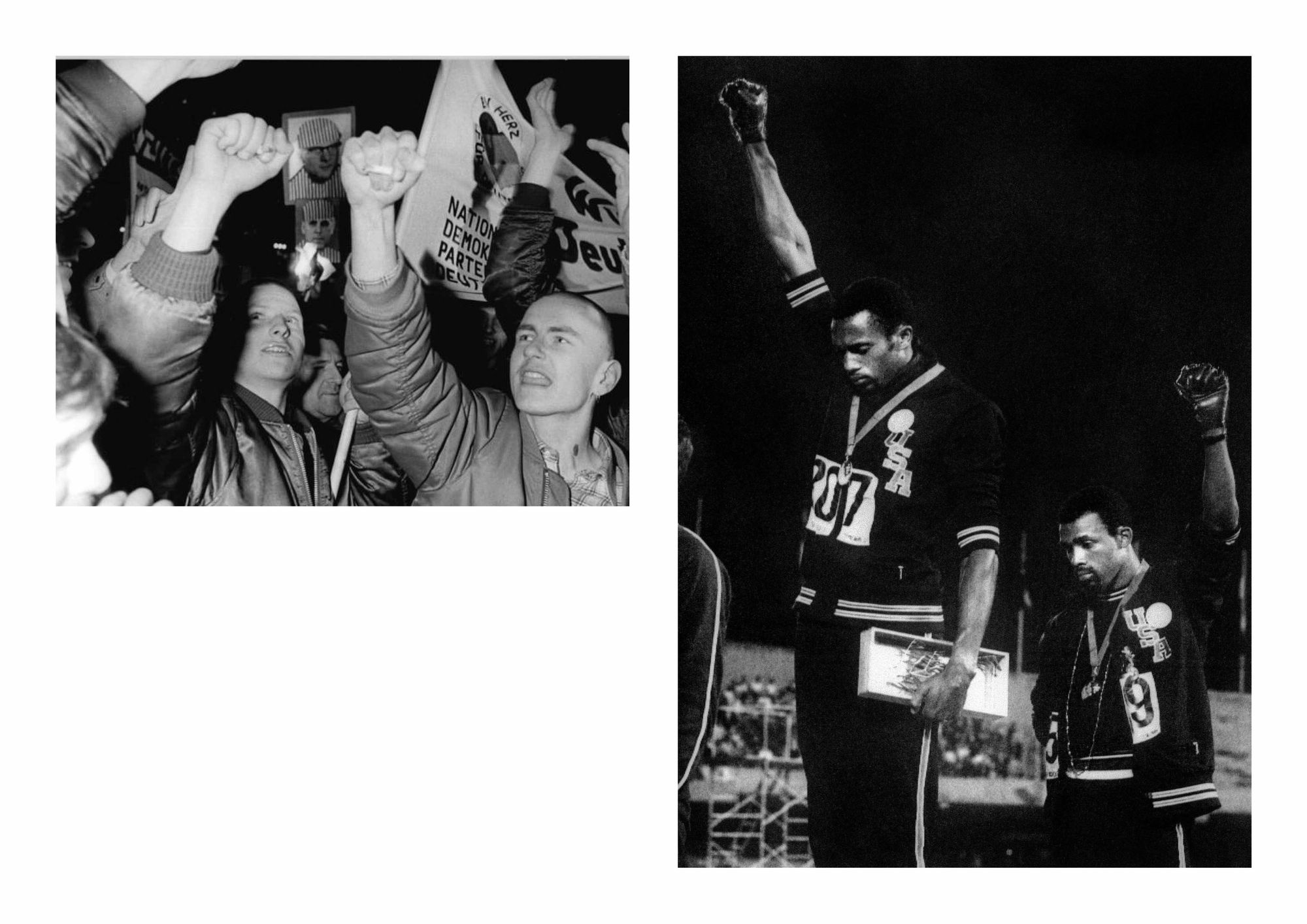
Fist as ambiguous salute. A- Neo Nazis salute during demonstration von "Republikanern", Leipzig January 1990, Neo Nazis, PDM / Wolfgang Kluge. B- The 1968 Olympics Black Power fist salute was a political demonstration conducted by African-American athletes Tommie Smith and John Carlos during their medal ceremony at the 1968 Summer Olympics in the Olympic Stadium in Mexico City. In addition, Smith, Carlos, and Australian silver medalist Peter Norman all wore human rights badges on their jackets. In his autobiography, Silent Gesture, Smith stated that the gesture was not a "Black Power" salute, but a "human rights salute". The event is regarded as one of the most overtly political statements in the history of the modern Olympic Games. PDM
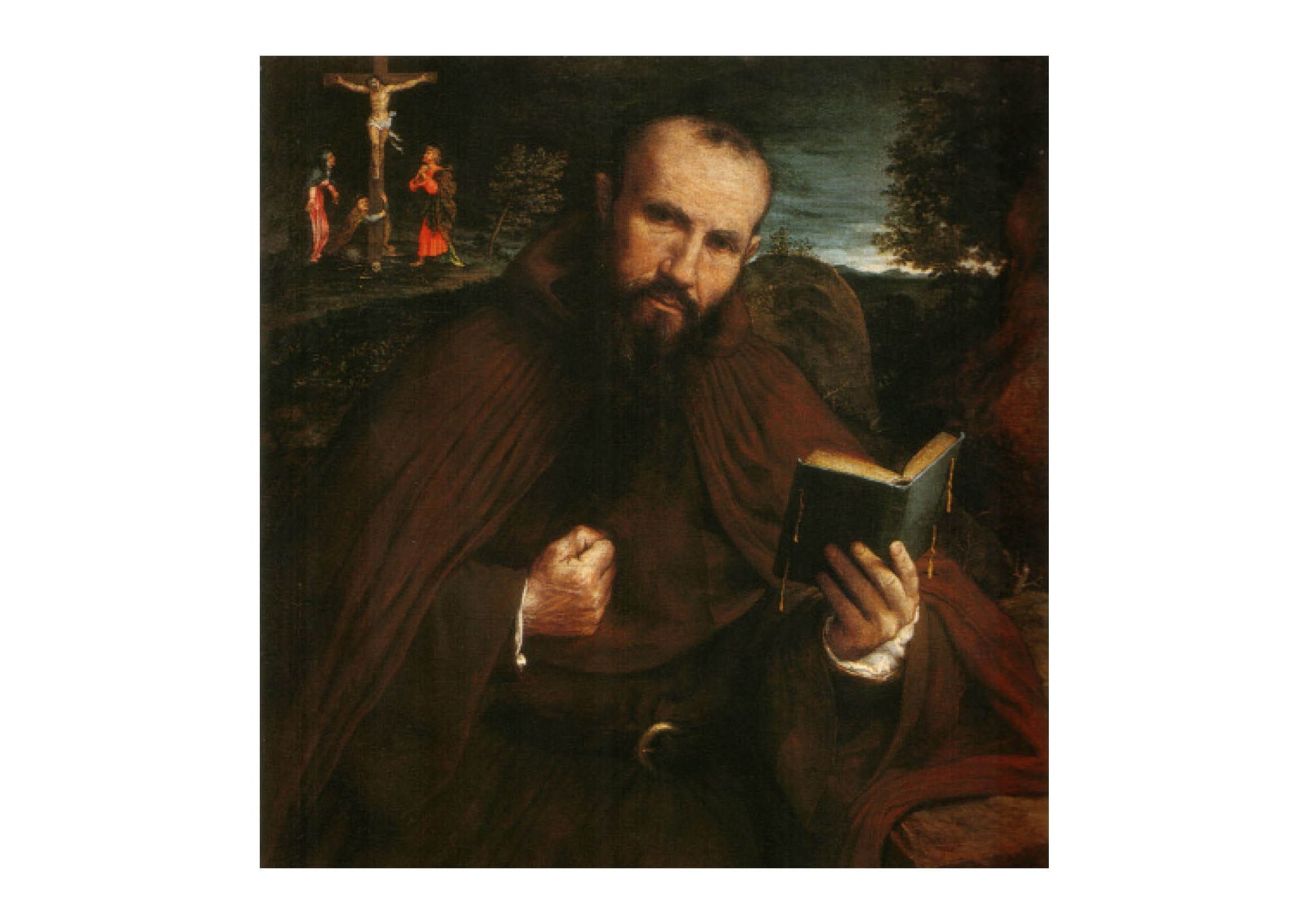
The fist as penitential act. Brother Gregorio Belo of Vicenza by Lorenzo Lotto, 1547. Public Domain
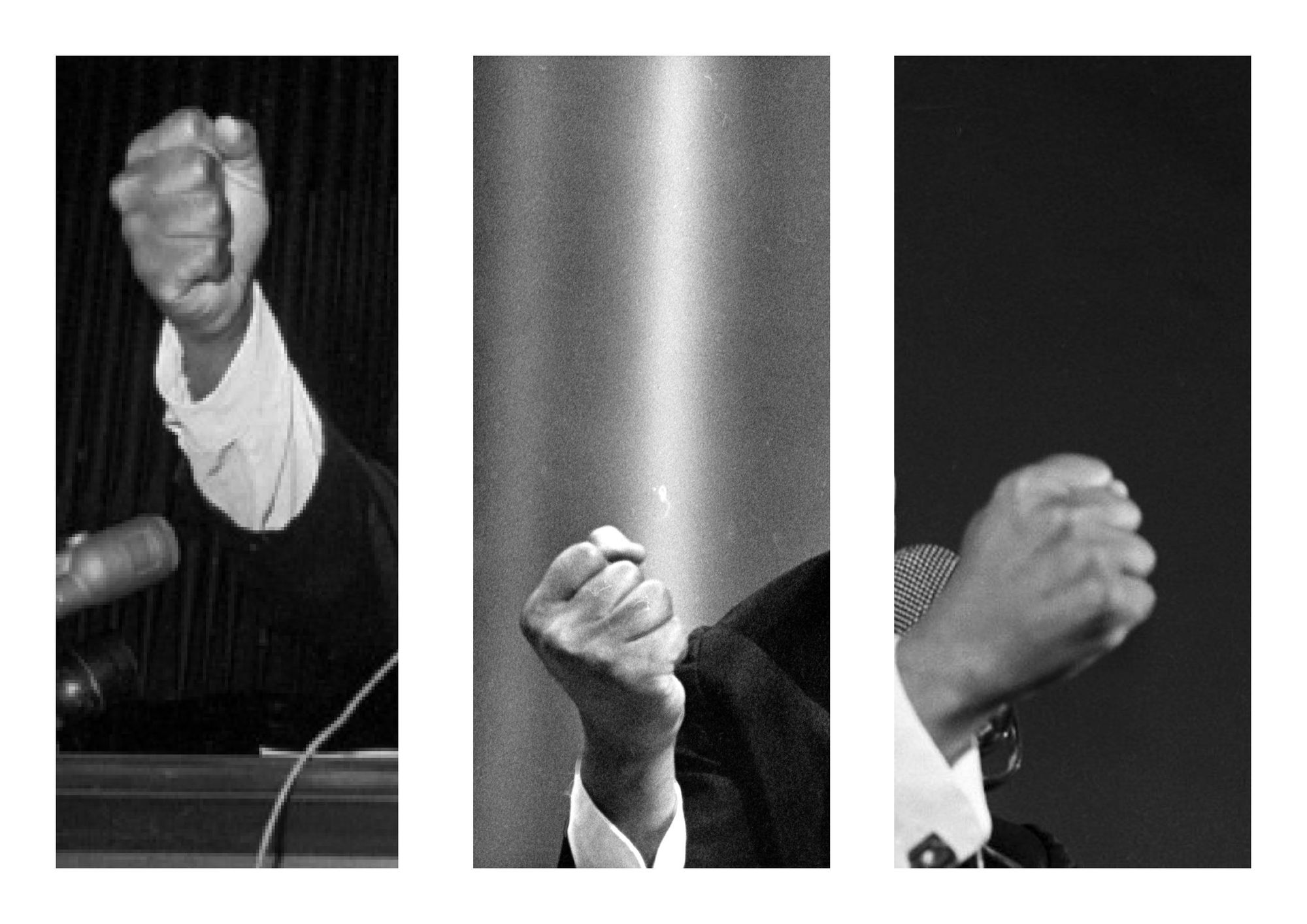
Kinesics of Martin Luther King’s fist during a speech to secure voting rights for black citizens, Selma, Alabama, Feb 12, 1965. © Francesca Seravalle
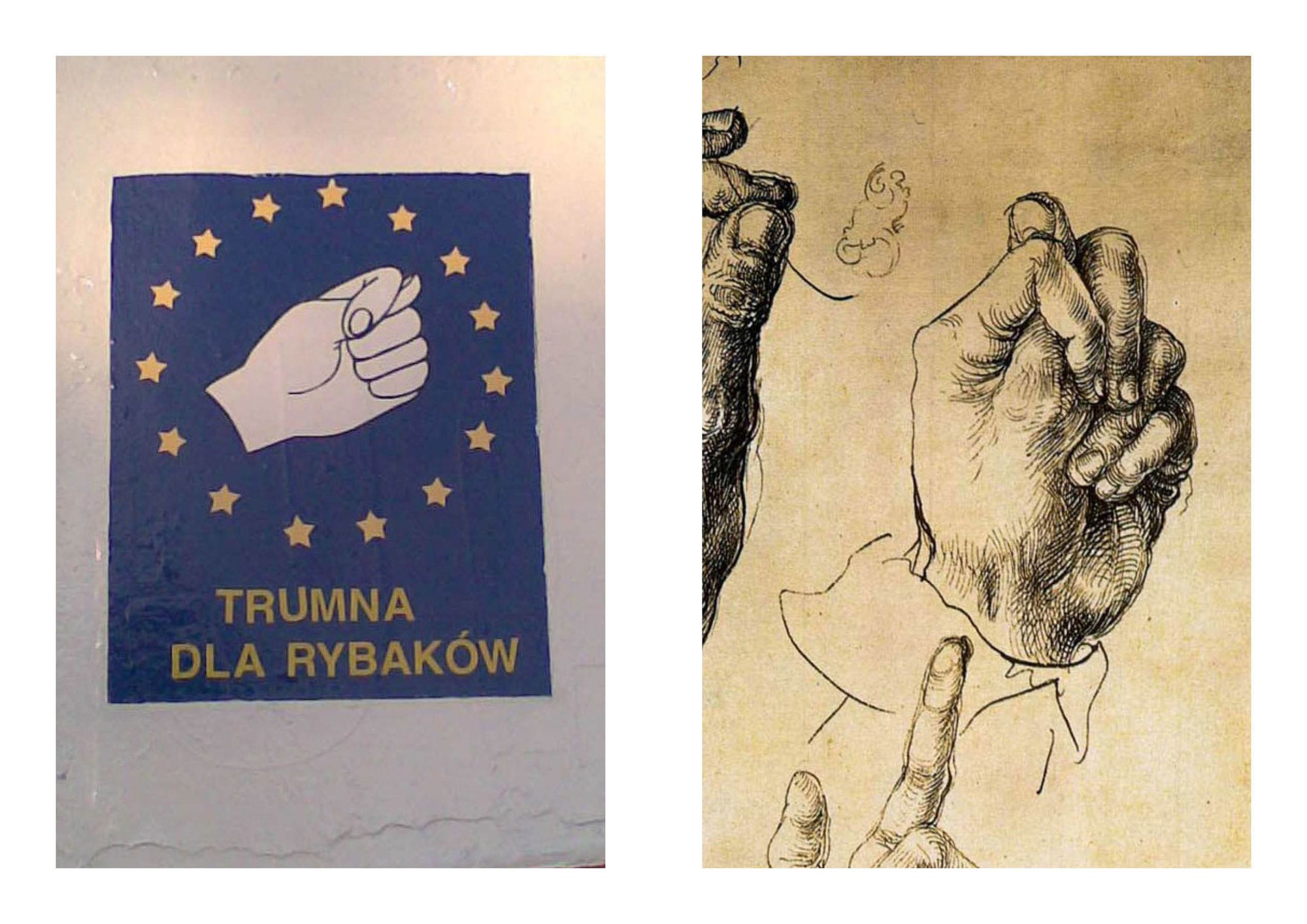
Emblematic fist The fig-hand: The obscene gesture A- "Trumna dla rybaków" ("Coffin for fishermen") sign visible on side of many Polish fishing boats. Polish fishermen protest against EU prohibition of fishing cod by Polish ships. PDM B- Durer 1494. In Italy this sign, known as mano in fica ("fig-hand"), or far le fiche (cunt gesture), for the resemblance to female genitalia, was a common and very rude gesture in past centuries, similar to the finger, but has long since fallen out of use. Not to confuse with "I've got your nose" gesture. “The two heads now became one, and two figures blended in one form appeared, where both were lost. Vanni makes an obscene gesture into the air, and curses God.” Dante’s Divine Comedy (Inferno, Canto XXV). PDM

The fist as reflex gesture of watching the clock. Warsaw Pact troops invasion, Courtesy of Josef Koudelka / Magnum Photos, August 1968.
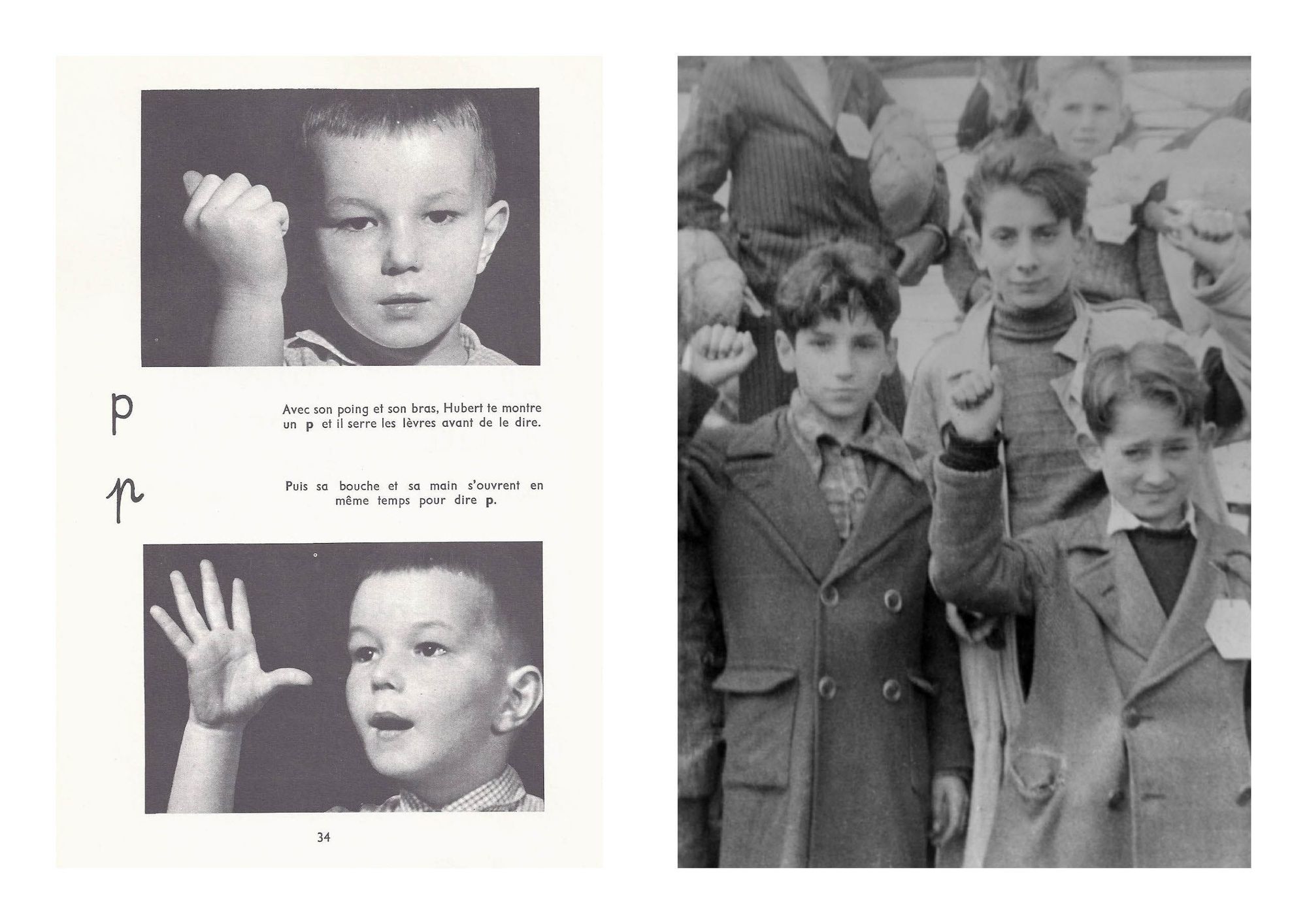
Phonetic Fist. A- Fist from the Geste Borel-Maisonny corresponing to phoneme P. The Borel-Maisonny phonetic and gestural method teaches french reading in a multi-sensory approach. It focuses on connecting the auditive, visual, articulatory and kinesthetic memories. It was originally developed by one of the founders of speech therapy in France. The idea is to associate each sound with a specific gesture that will help memorizing, but also acts as a link between the sound and its graphic representation. PDM B- Children preparing for evacuation from Spain, in 1936 during the Spanish Civil War, some giving the Republican salute.